volume 12 | issue 2 | winter 2023

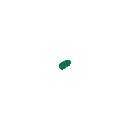





anticipate seeing not only a multitude of excited Jollibee patrons waiting to get their hands on their Jollibee favorites, but also first-timers waiting to have their own Jollibee experience," said Jose Miñana, Jollibee Foods Corporation's Group President for North America. "There's no greater joy for us than serving the needs and tastes of Jollibee fans in the community. At Jollibee, we aim to bring families together for happy moments over great tasting food with superior value, served with warm and friendly service –our own brand of joy." The brand has become a symbol of nostalgia and warm childhood memories for many overseas Filipinos in the U.S. To many, Jollibee is the go-to restaurant of Filipinos for both special
WINTER WEATHER

ipation and excitement, Jollibee, the largest Asian restaurant company, is now open in Jacksonville. This is the 36th store in the US, as well as the first in the state and Southeast US. It opened to the public on March 18, 2017. Jacksonville is the most populous city in the Sunshine State, as well as home to the largest FilipinoAmerican community in Florida. The longawaited arrival of Jollibee in the city has
THIRSTY FOR GROWTH
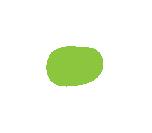
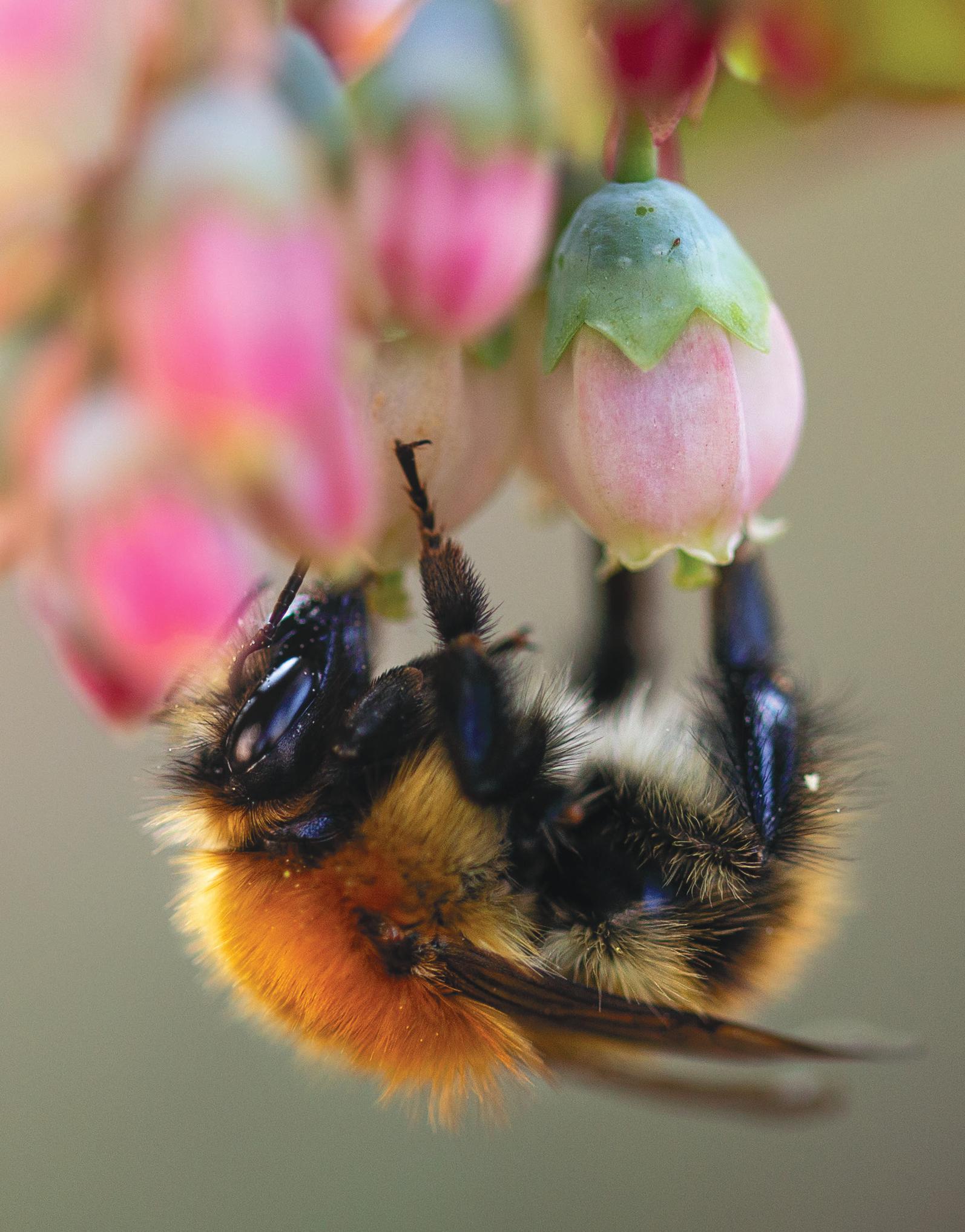
Winter Irrigation Sets Tone for the Season
See JOLLIBEE page 15
PERMIT NO. 4595





THE ENDORSED PUBLICATION OF THE FLORIDA BLUEBERRY GROWERS ASSOCIATION
OF THE SEASON Management Strategies For Dormant Plants VARIETY IS KEY Bumble Bees a Great Way to Boost Pollination FIGHT THE FREEZE Your Essential Protection Checklist
www.FloridaBlueberryGrowers.org
TOPIC
BLUEBERRY BUD MITE Newer Acaricides Show Promise PRSRT STD US POSTAGE PAID WEST PALM BEACH,FL
With the opening, Floridians will get to try Jollibee's signature menu items such as the world famous Chickenjoy. This dish is delicately breaded to be crispylicious on the outside and juicylicious inside. The well-loved Jolly Spaghetti is a favorite of both kids and kids-at-heart because of its signature sweetstyle sauce, loaded with chunky slices of savory ham, ground meat, and hotdog. Other classic menufavorites include the juicy and cheesy Jolly Hotdog, and the Peach Mango Pie, which is made with real Philippine sweet mangoes and a flaky golden brown crust. edition


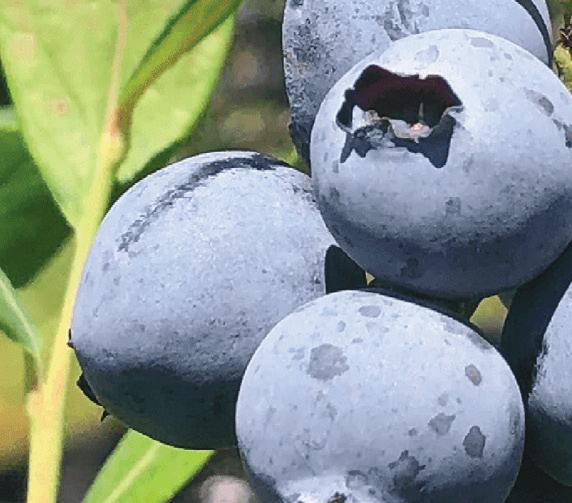
Blueberry Starter OPTIMUS ARCADIA Taking orders for Optimus WE SERVICES NURSERIES WITH 102 COUNT AND 72 Larger starter plants also available Agromillora.com




COMING SOON Optimus and Arcadia AND GROWERS 72 COUNT LINEAR TRAYS available in quart-sized containers Sales: 863-978-8646
Starter Plants
Mike Kemp Head of Sales Agromillora Florida Nursery
8 THIRSTY FOR GROWTH: IRRIGATION FOR LATE WINTER AND SPRING
Proper irrigation during the late winter and spring is critical as blueberry plants emerge from winter, initiate new growth, and move through the various critical growth stages of flowering, fruit set, canopy development, and fruit production.
10 FIGHT THE FREEZE
Virtually all blueberry fields in Florida are subject to late winter or early spring freezes that can cause serious reductions in yield. This list of activities for freeze preparation can help you protect and save your crop.

13 NEWER ACARICIDES PROMISING IN BATTLE AGAINST BLUEBERRY BUD MITES
The blueberry bud mite is a formidable pest of southern highbush blueberry in Florida. It belongs to a group of microscopic mites known as eriophyid mites. The bud mite population has been observed to peak as early as February in Florida, then decline during the hot summer months of June through September. Find out the best way to combat this pest.
31 VARIETY IS KEY TO POLLINATION

Managed bumble bees are a great option for supplementing existing pollination on blueberry farms. Bumble bees are especially valuable in cases where pollination problems such as insufficient fruit set, underperforming cultivars, and poor pollinator visitation are occurring. Due to their differing behaviors, higher pollination efficacy, and extended foraging compared to honey bees, managed bumble bees may act as a biological insurance policy.

4 | The Blueberry News 6 Meeting Preview 7 President's Letter 11 Topic of the Season 13 Bug of the Month 15 Grower's Thoughts 20 Publisher’s Interlude 20 Breeding Program Update 33 Classifieds 35 Grower 411 38 USHBC Update
fieldsequip.com 3203 HAVENDALE BLVD WINTER HAVEN, FL 33881 863-967-0602 3440 US HIGHWAY 17 SOUTH ZOLFO SPRINGS, FL 33890-0837 863-735-1122 17215 HIGHWAY 27 NORTH MINNEOLA, FL 34715-9273 352-394-7181 John Deere 3025E Tractor 300E Loader RC2060 Rotary Cutter 20’ Car Hauler Trailer “Nothing Runs Like a Deere” Test Drive One Today! Package Deal Only $32,489.00 ASK ABOUT ALL OF OUR TRACTOR PACKAGES 0% APR for 48 Months PLUS $250 with the purchase of 3 new John Deere or Frontier implements*139c With purchase of 3 implements 1391O er valid on qualifying purchases made 29 October 2022 through 31 January 2023. Subject to approved installment credit with John Deere Financial. Down payment may be required. Average down payment is 10%. $20.83 per month for every $1,000 nanced. 0% APR for 48 months only. Taxes, freight, setup, insurance, fees, and delivery charges could increase monthly payment. Available at participating U.S. dealers. Prices and models may vary by dealer. O er available on new equipment and in the U.S. only. Prices and savings in U.S. dollars. $250 OFF implement bonus is in addition to Low Rate nancing on all 3025E Series Tractors and requires the purchase of 3 qualifying John Deere or Frontier implements. * Quarter 1 2023 - US Ag Installment c 'Subject to approved installment credit with John Deere Financial. Taxes, freight, setup and delivery charges could increase monthly payment. Available at participating U.S. dealers. Prices and models may vary by dealer. O er available on new equipment only. Prices and savings in U.S. dollars. Equipment: 3025E,3025E
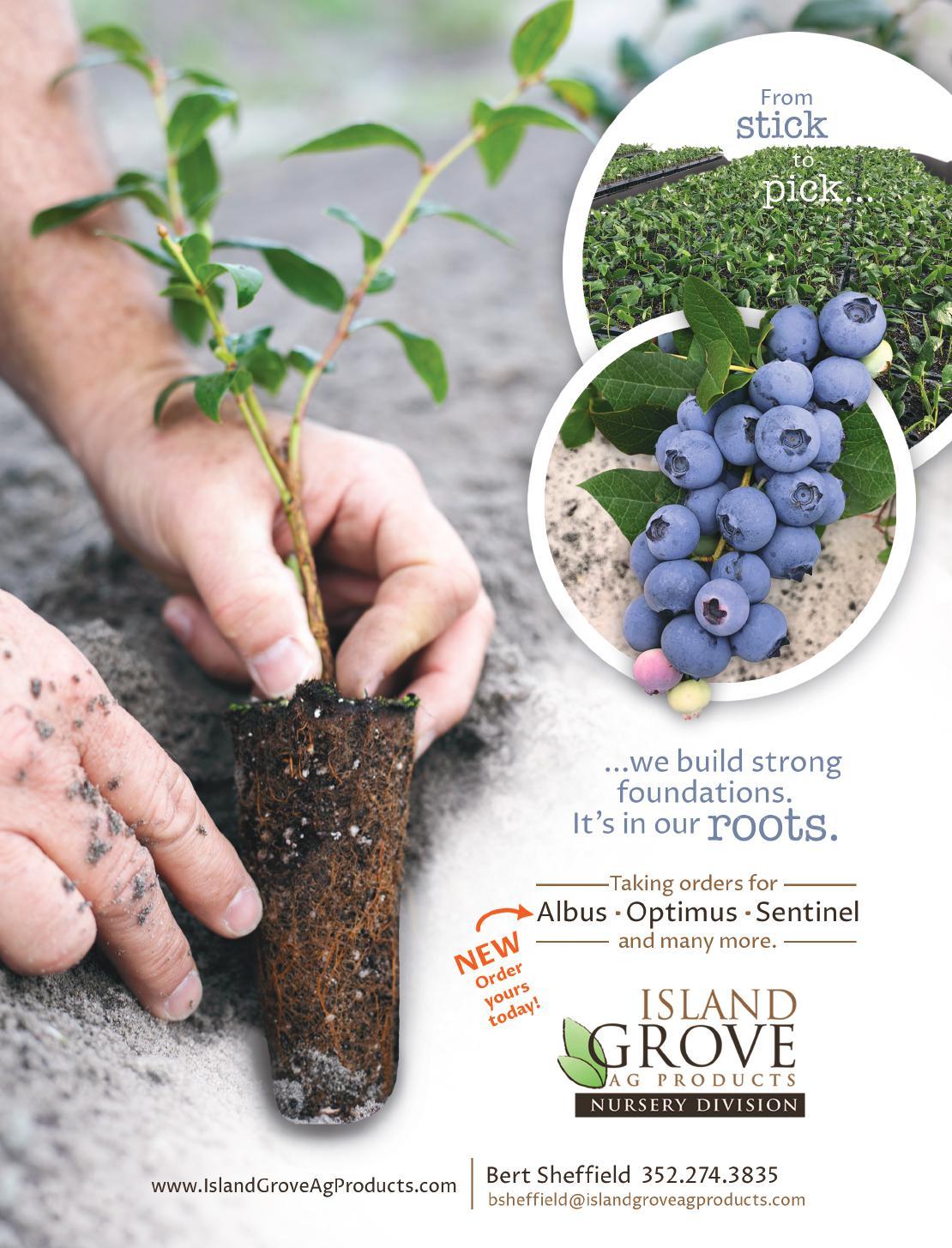
FloridaBlueberryGrowers.org 5
FBGA Spring Field Day and Meeting 2023
Thursday, March 9, 2023


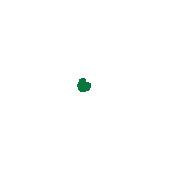


UF-IFAS Plant Science Research and Education Unit
2556 W. Highway 318, Citra, FL 32113

Featured sessions will include:
• Dr. Rachel Mallinger - Assessing honeybee hive strength, pollinator activity, and pollination
• Dr. Gerardo Nuñez – What we know and what we should know about blueberry phosphorus nutrition
• Dr. Patricio Muñoz – UF Blueberry Breeding Program updates

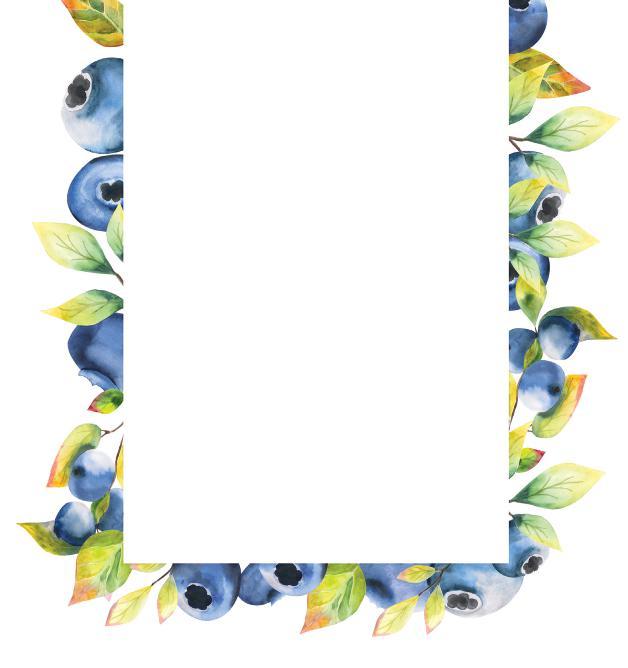


Tour active fields with row and specialty crop research projects. Transportation will be provided. Our allied partners will be available with everything you need as a commercial or small grower at the daylong trade show.
Registration includes breakout sessions, trade show, lunch, and field tours. $30 for members and $45 for nonmembers.
Visit FloridaBlueberryGrowers. org for registration and sponsorship information.

PUBLISHER
Nelson Kirkland
MANAGING EDITOR
Jessica McDonald
ACCOUNT EXECUTIVE







Juanita Halter
LIAISON EDITORS
Doug Phillips, Jeff Williamson
CONTRIBUTING WRITERS
Doug Phillips, Jeff Williamson, Oscar Liburd, Phil Harmon, John Ternest, Patricio Muñoz
CONTRIBUTING PHOTOGRAPHERS
Doug Phillips, Jeff Williamson, Brittany Lee
CONTRIBUTING ARTISTS
Dawn Lewandowski
DELIVERY
DLS Distributors
6 | The Blueberry News FloridaBlueberryGrowers.org www.FloridaBlueberryGrowers.org Published by Central Florida Media Group in cooperation with the Florida Blueberry Growers Association Copyright © 2023 Central Florida Media Group. ALL RIGHTS RESERVED. This issue of The Blueberry News is a trademark of Central Florida Media Group. Reproduction or use in whole or in part of the contents of this magazine without written permission is prohibited. The Blueberry News makes every effort to ensure the accuracy of content published. In the event of an error found herein however, neither the publishers or advertisers will be held responsible, nor do the publishers accept any liability for the
of statements
by advertisers in advertising and promotional materials.
the opinions and claims expressed in advertisements and promotional materials do not necessarily reflect those of the Florida Blueberry Growers Association or Central Florida Media Group and do not imply an endorsement. 56 Fourth Street Northwest, Suite 100 Winter Haven, Florida PHONE 863.248.7537
accuracy
made
Furthermore,
P.O. BOX 358086

Gainesville, FL 32635 352-448-1418



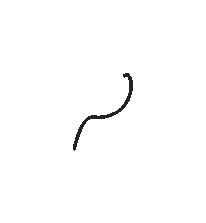

OFFICERS
Beth Eng, Interim Executive Director bethengemc@gmail.com
Leonard Park, President president.fbga@gmail.com
Jerod Gross, Vice President fbga.vp@gmail.com
Michael Hill, Secretary michael@handafarms.com



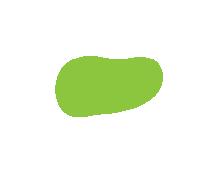
Bobby Barben, Treasurer rhbjr@barbenfruit.com
BOARD OF DIRECTORS
Wayne Bass
Jerod Gross
Phil Harmon
Gary Smith
Kyle Straughn
Jeff Williamson
Doug Phillips
Travis Kuhn
Thank You for Your Service!
This year is one of transition for the FBGA Board membership. Several old hands who have guided us through challenging years are stepping down to focus on other important obligations with their endorsement of the concept that new board members bring new perspectives and ideas to refresh the board and broaden its inclusion of other growing regions.
The long-serving members stepping down are well-known and respected by many Florida growers. Join me in thanking them for their years of dedication and the valuable time they have freely donated to our industry. Board members leaving service are:
• Ryan Atwood, our Immediate Past President
• Michael Hill, our Secretary and Past President
• Wayne Bass, one of our longserving Board members
At the 2022 Fall Conference, our FBGA membership voted in five growers as new Board members serving their initial term of three years. I look forward to working with this talented and experienced group of growers who will certainly complement our current Board. Most all of our Florida production regions will be represented, as well as many key marketer groups. I hope this will strengthen the FBGA and our Florida blueberry industry. Newly serving members are:
• Cameron Allison of Wild Goose Farms in Umatilla. (With his finance background, Allison has agreed to also serve as Treasurer.)
• Jason Carlton of JLC Farms. Jason is a longtime citrus grower and H2A contractor and recently added blueberries at River Valley Farms in Arcadia, a UF breeding trial site.
• Marcelo Estrada manages the expanding Peace River Farm in Zolfo Springs.
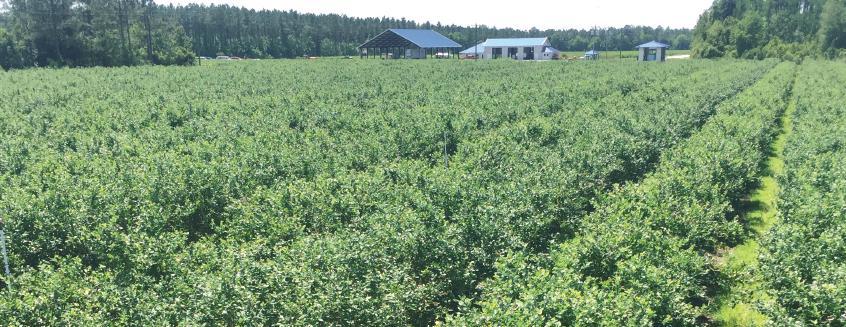
• Jack Green, Jr., Director of Agriculture at Clear Springs and owner of Blue Labor in Polk County.


• Shawn Pollard, Sales Manager of Astin Strawberry Exchange and grower at Shawn Pollard Blueberry farm in Zolfo Springs.
If you get a chance, thank them for serving your Florida Blueberry Growers Association.


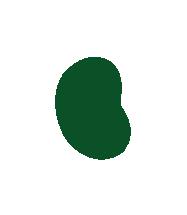
By now I hope you have added the FBGA Spring Field Day to your calendar. It will be well worth joining your fellow growers on Thursday, March 9, at the UF Citra Research Station. We’ve already lined up a great program with important indoor and in-field presentations on pollination, nutrition, evergreen nutrition research, breeding trials in bloom and fruit, and more.
Until then, stay diligent protecting our Florida crop. Disease, insects, and frost can waste a year of hard work, so don’t let up this winter. I know we’re staying after it, too.
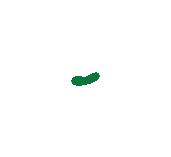 Leonard Park President
Leonard Park President
president’s letter
Florida Blueberry Growers Association
Thirsty for Growth
Proper Irrigation Is Critical for Blueberries in Late Winter and Spring
Proper irrigation during the late winter and spring is critical as blueberry plants emerge from winter, initiate new growth, and move through the various critical growth stages of flowering, fruit set, canopy development, and fruit production.

The amount of evapotranspiration, or ET (loss of water to the atmosphere through evaporation from the soil and transpiration by the plant), that occurs in blueberry fields during the winter will vary depending on weather conditions and management practices (such as traditional deciduous versus evergreen production) but is usually significantly lower than at other times of the year. With warmer temperatures, longer day lengths, and the emergence of new growth (flowers and leaf canopy development), blueberry water use will typically increase rapidly during late winter and early spring.
Irrigation for Deciduous Systems
Research on seasonal blueberry water use in Florida’s Marion County, with a deciduous production system, showed that the least plant water use occurred during January with a steady increase in water use from January to May. A very rapid increase in water use was noted from February to March, which corresponded with plant emergence from dormancy and leaf canopy and early fruit development. Average water use for March was almost 70% of the peak water
use later during the summer. Water use continues to increase through spring as temperatures increase, photoperiods lengthen, and fruit and leaf growth continues. The period from fruit set to maturity, known as the fruit development period, often coincides with dry weather in Florida and is an important period for proper irrigation management.
Irrigation for Evergreen Systems
Irrigation in an evergreen system requires somewhat different practices than those used in a deciduous system. During fall and winter, plant transpiration and water use are higher in the evergreen system than with dormant plants, since deciduous southern highbush blueberries typically defoliate during this time. Providing sufficient irrigation in the evergreen system during this time of reduced rainfall can help support healthy and intact foliage through the harvest season.
Scheduling irrigation for blueberries can be challenging due to shallow root systems and highly amended soils with variable and often limited water holding capacities. Dur-
ing periods of fruit development or high canopy growth, about 1 to 1.5 inches of water per week may be required. For example, mature “Emerald” plants in North-Central Florida used an average of about 2 gallons of water per day during the peak periods of water use. Under high water use conditions, irrigation efficiency can be increased by applying water frequently and in relatively small amounts to avoid oversaturation of the soil and minimize drought stress or loss of water (and nutrients) below the root zone. This is especially true where the rooting depth is shallow.
Blueberry plant water status changes throughout the day. A healthy, well-irrigated blueberry plant will recharge its water status overnight while the stomata are closed and water loss from the plant is minimal. It is important that soil water is available for uptake overnight and during predawn and early to mid-morning. The morning (after sunrise) is an important time of the day for photosynthesis and other important processes in a healthy well-irrigated blueberry plant. During hot, dry weather, these processes may be limited later in the afternoon by stomatal closure due to the plant’s need to conserve water. Therefore, it is important that plants begin the day well-hydrated.
8 | The Blueberry News FloridaBlueberryGrowers.org for the crop
Soil Moisture Sensors
Knowing when to apply irrigation is critical to meeting plant water needs in advance of drought stress. Soil moisture sensors can supply data on water content at different depths, providing growers with information needed for proper irrigation scheduling. This information can potentially reduce water use while maintaining or enhancing plant growth and fruit quality. The goal is to maintain soil moisture within a specified range by replacing water lost through evapotranspiration.
Common types of moisture sensors include those that measure soil water content (volumetric) and those that measure soil water tension (the force of adhesion of water to soil particles). Sensors measuring soil water content can indicate both when and how much to irrigate. See EDIS publication BUL343, “Field Devices for Monitoring Soil Water Content” (https://edis.ifas.ufl.edu/ae266) for more details. Sensors measuring soil water tension (tensiometers) may not work well in Florida’s light sandy soils, or in pine bark beds or soils highly amended with pine bark where they may lose suction.
The volume of soil measured by each sensor is limited so proper sensor placement is important for meaningful readings. Sensors should be in an area that is representative of the field in general, and away from the edge of the field to avoid border effects. For fields with significant variability (e.g., slope, wetness, cultivar type, plant age, etc.), multiple sensor sites will be necessary.
Sensor placement should be within the root zone. If only one sensor per site is used, it should be placed at a depth in the middle of the root zone. However, multiple sensors placed at different depths will provide additional information. Sensors placed near the soil/bark surface can indicate when to irrigate, and sensors in the lower root zone will provide information on depth of wetting as an indicator of how much to irrigate.
Irrigation practices can have significant effects on fertilizer use efficiency. Many Florida blueberry soils have low nutrient holding capacities so that some fertilizer elements (such as nitrogen) are readily leached below the blueberry plant’s shallow root system. If irrigation application frequencies and durations are not timed correctly, fertilizer may be leached below the root zone potentially infiltrating the ground water and requiring additional fertilizer applications. Carefully monitoring rapidly changing weather conditions, plant and crop development, and soil moisture sensor data should help with decisions needed to develop effective irrigation programs with high water and fertilizer use efficiencies.
Additional Resources
Phillips, D. A. and J.G. Williamson. 2022. Irrigation practices for southern highbush blueberry in Florida. Publication HS1432. University of Florida. https://edis.ifas.ufl.edu/publication/HS1432.
Williamson, J.G., L. Mejia, B. Ferguson, P. Miller, and D. Z. Haman. 2015. Seasonal water use of southern highbush blueberry plants in a subtropical climate. HortTechnology. 25(2):185-191. https://doi.org/10.21273/HORTTECH.25.2.185
JEFF WILLIAMSON, Horticultural Sciences Department, UF/IFAS & DOUG PHILLIPS, Blueberry Extension Coordinator, UF/IFAS
MEMBERSHIP INFORMATION


To join or renew your membership in the Florida Blueberry Growers Association, mail a check payable to:
FLORIDA BLUEBERRY GROWERS ASSOCIATION, INC. P.O. Box 358086
Gainesville, FL 32635
•Grower Member: $150 (Florida & out-of-state growers)
Additional Associate Member/Grower: $50 each
•Allied Member: $200 (equipment and chemical companies, etc.)



Additional Associate Member/Allied: $50 each
•Educational & Research Member: $10 (University and USDA members who do not grow blueberries commercially)

• Mulch sales
• Container sales
• Farm consulting
Contact Jack Green, Blue Labor, LLC. jackgreen4@icloud.com


863-397-9471

FloridaBlueberryGrowers.org The Blueberry News | 9 _________
CREDIT
1. Flush all overhead sprinklers to clear debris – remove heads and flush.
2. Test and service the pumping units, replace filters and have spare filters available.
3. Treat diesel tanks for water and algae.
4. Check lines and sprinklers in the field for leaks and clogged nozzles.
5. Check water pressure on ends of distant lines.
6. Make sure drainage in and around fields is adequate. Make sure roadways around and through the fields will withstand traffic at night during irrigation.
7. Remove or relocate any equipment that may impede or pose a danger to vehicular traffic.
8. Have a (remote-controlled, magnetic roof-mounted) high-intensity spotlight ready to plug into the truck to check sprinklers.
9. Put shielded minimum thermometers in cold, average, and warm areas of fields – at the average height of the middle of the bushes,

10. Consider purchasing weather stations that communicate real-time weather conditions to computers and smart phones.
11. Hang some ribbons on trees or poles around fields to detect slight breezes.
FIGHT THE FREEZE Protection Checklist
Virtually all blueberry fields in Florida are subject to late winter or early spring freezes that can cause serious reductions in yield. Here is a list of activities for freeze preparation. The list was originally published by Mike Mainland in the North Carolina Blueberry News, Vol. 7, No. 1 and has been modified by IFAS faculty and FBGA board members.
12. Identify a good source of agricultural weather information and watch it closely. Consider subscribing to a weather service that issues freeze warnings.
13. Consider purchasing a monitor that calls you when the temperature gets low.
14. Consider purchasing a hand-held wind meter or anemometer to measure wind speed.
15. Consider purchasing a sling psychrometer to measure wet bulb and dry bulb temperatures, relative humidity, and dew point.
16. Have rain suits and boots available for everyone responsible for checking the irrigation system.
17. Have wires available to unclog nozzles.
18. Have tools and replacement parts that are necessary to exchange nozzles and/ or sprinklers.
19. Be certain you know the “safe cut off temperature” before you shut down your overhead freeze protection irrigation. This temperature can be as high as 40 degrees F if the dew point is low and wind is high.
20.Fill all vehicles with fuel before the freeze event.
21. Have help available or on call if needed for emergencies.
Additional Resources
Weathering the Winter. The Blueberry News. Vol 10 (2) January 2021. P 20-21, 38 https://bit. ly/3EW5eEE
Protecting blueberries from freezes in Florida. https://edis.ifas.ufl.edu/ pdf/HS/HS21600.pdf
Cold Protection toolkit. Florida Automated Weather Network (FAWN), Univ. of Florida Extension. https:// fawn.ifas.ufl.edu/tools/ coldp/
AgroClimate website. http://agroclimate.org/




University of Georgia Extension Circular 1128, Preparing Your Blueberry Freeze Protection System. https://secure. caes.uga.edu/extension/publications/files/ pdf/C%201128_2.PDF

10 | The Blueberry News FloridaBlueberryGrowers.org
field management
photo by BRITTANY LEE
topic of the season
Management Strategies For Dormant Plants
by DOUG PHILLIPS, UF/IFAS Blueberry Extension, JEFFREY G. WILLIAMSON, Horticultural Sciences Department, PHILIP F. HARMON, Department of Plant Pathology, OSCAR E. LIBURD, Entomology and Nematology Department, and PETER DITTMAR, Horticultural Sciences Department, all with the University of Florida/IFAS.


The following tables were updated from the 2022 UF/IFAS Florida Blueberry Integrated Pest Management Guide found at edis.ifas.ufl.edu/hs380. This publication is intended for use only as a guide. Specific rates and application methods are on the pesticide label, and these are subject to change at any time. Always refer to and read the pesticide label before making any application! The pesticide label supersedes any information contained in this guide, and it is the legal document referenced for application standards.
POLLINATOR PROTECTION
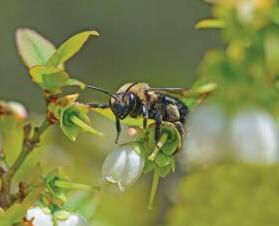
Before making insecticide applications, monitor insect populations to determine if treatment is needed. If insecticide application is necessary:
1. Use selective pesticides to reduce risk to pollinators and other non-target beneficial insects.
2. Read and follow all pesticide label directions and precautions. The label is the Law! EPA now requires the addition of a “Protection of Pollinators” advisory box on certain pesticide labels. Look for the bee hazard icon in the Directions for Use and within crop specific sections for instructions to protect bees and other insect pollinators.
3. Minimize infield exposure of bees to pesticides by avoiding applications when bees are actively foraging in the crops. Bee flower visitation rate is highest in early morning. Apply pesticides in the late afternoon or early evening to allow for maximum residue degradation before bees return the next morning. Bee foraging activity is also dependent upon time of year (temperature) and stage of crop growth. The greatest risk of bee exposure is during bloom.
4. Minimize off-target movement of pesticide applications by following label directions to minimize off-target movement of pesticides. Do not make pesticide applications when the wind is blowing towards bee hives or off-site pollinator habitats.
DORMANT PLANT DISEASES AND PESTS
PHYTOPHTHORA ROOT ROT
Phytophthora root rot (PRR) is considered the most serious soilborne disease that affects southern highbush blueberries (SHB). Some SHB cultivars are considered tolerant and others highly susceptible, while rabbiteye cultivars are less affected by the disease. PRR is caused by the oomycete pathogen Phytophthora cinnamomi. Common aboveground symptoms associated with Phytophthora infections are reductions in plant vigor and premature fall discoloration. Symptoms at ground level and belowground include crown and root rots. Disease on susceptible hosts occurs when certain environmental conditions (primarily a saturated root zone and root wounding) trigger Phytophthora reproduction, infection and symptom development. PRR is typically more severe in low and poorly drained areas of a farm. The pathogen causes root discoloration (dark brown to black, instead of the normal cinnamon brown) and decay. Advanced stages of infection cause plant stunting, wilting, an abnormal or reduced root system, root rot, and plant dieback. Leaf discoloration also typically occurs, including yellowing, reddening with or without marginal burn, abnormal growth of new leaves, and defoliation. Plants affected by PRR may also be more susceptible to other dieback diseases including stem blight. Fungicides with the active ingredient mefenoxam, such as Ridomil Gold SL, are recommended where PRR occurs and are applied twice yearly (typically in January and June) through drip irrigation or as a band application directly to the bed. In addition to the phenylamide fungicide mefenoxam, which is applied to the soil, Aliette (Fosetyl-Al 80%) and numerous phosphorous acid products, referred to as “phites” or phosphonates, provide some control when applied as summer foliar sprays. See Table 1.
BLUEBERRY GALL MIDGE
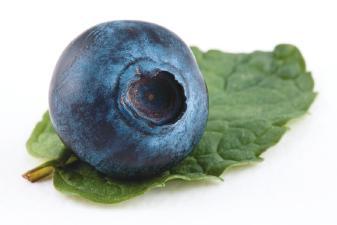
The blueberry gall midge (BGM) is a tiny fly whose larvae feed on vegetative and floral buds. Typically, gall midge will attack young developing floral and leaf buds, which will cause floral buds to abort or fall off the bush, resulting in poor flowering and “fruit set.” With heavy gall midge injury to floral buds, there would be a lighter bloom. Instead of the usual 5 to 6 buds producing several flowers, only 2 may reach maturity, resulting in poor fruit clusters. Blueberry gall midge will also feed on leaf or vegetative buds, leaving young leaves deformed and misshaped. Gall midges lay eggs on warm winter days and at any time during the growing season when the plants are making new flushes of growth. Delegate® (Spinetoram), Exirel® (Cyantraniliprole), diazinon (if labeled for use on your site), Apta® (Tolfenpyrad), and Movento® (Spirotetramat)
continued on next page
FloridaBlueberryGrowers.org The Blueberry News | 11
topic of the season
continued from previous page
DORMANT PLANT DISEASES AND PESTS, CONT.
can be applied for gall midge control between flower bud stages 2 and 3 (Figures 2 and 3). Application should take place when the most mature buds first show slight scale separation. Sprays may need to be repeated during warm spells. Bud scale separation may occur as early as December 15th in north Florida. Among rabbiteye cultivars, 'Premier' is often particularly attractive to the gall midge and is a good sentinel variety to monitor. Gall midge sprays can also suppress a prebloom thrips population. See Table 2 and EDIS publication ENY-997, “Blueberry Gall Midge on Southern Highbush Blueberry in Florida” (https://edis.ifas.ufl.edu/publication/IN1239).
IMPORTED FIRE ANTS
Ant baits employed in early spring as a broadcast treatment usually eliminate most but not all fire ant mounds within treated areas. Under high ant pressure, treating a second time in the fall provides better fire ant control. Most ant baits are slow acting and require up to 8 weeks to control active mounds because they interfere with reproduction, causing a gradual colony die-off. Extinguish® Professional Fire Ant Bait (0.5% methoprene) is labeled for use on all crop land sites. It is effective but somewhat slower acting than Esteem® Ant Bait (0.5% pyriproxyfen). In order for the bait to be effective, active ant foraging is essential. Worker ants must be attracted to baits so that they will carry the baits back to their colonies. Ideally, temperatures should be warm and sunny. Ant baits work best when the soil is moist but not wet. Avoid applying ant baits when conditions are expected to be cold, overcast, rainy, or very hot. Individual mound treatments are most effective when used as needed for the occasional colony that survives broadcast treatments. Mound treatments using insecticide baits should be applied in a circle 3–4 feet from the mound. Baits should not be placed directly on top of mounds so that mounds remain undisturbed. The colony will move the queen to safety if mounds are disturbed. See Table 2.
SCALE
Scale insects injure blueberries by sucking plant sap, inserting their mouthparts into a plant and remaining immobile throughout their lives. Signs of infestation are leaf yellowing (chlorosis), defoliation, fruit drop, sooty mold, branch dieback, or plant death. Soft scales, Coccidae, secrete a waxy covering over the body. They also secrete a large amount of sugary waste (honeydew) resulting in sooty mold, which can interfere with photosynthesis and slow plant growth. Of the soft scales, Indian Wax scale, Ceroplastes ceriferus (Fabricius), is the most prolific on blueberries in Florida. See Table 2 and EDIS publication ENY-411, “Insect Management in Blueberries in the Eastern United States” (https:// journals.flvc.org/edis/article/view/116379).
PREBLOOM THROUGH GREEN TIP (LEAF BUDS) AND PINK BUD (FLOWER BUDS) DISEASES AND PESTS
PHOMOPSIS CANE AND TWIG BLIGHT
Phomopsis cane and twig blight is a fungal disease caused by Phomopsis vaccinii, which is spread to uninfected plants by wind and rain. Characteristic symptoms are dark-brown lesions on fruiting twigs (often surrounding floral buds), dieback of young twigs, and shriveling of flower and fruit clusters on diseased stems. Dying tissue may spread down the twig until most of the flower buds on an individual twig die. Shriveling of flowers and fruit clusters may appear similar to Botrytis damage. Control measures include fungicide applications and pruning out infected twigs.
BLUEBERRY GALL MIDGE
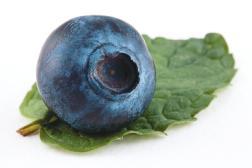
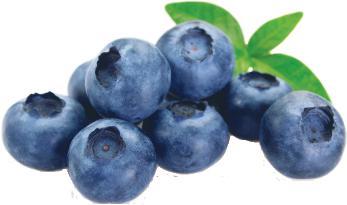
See discussion above.
10%–20% BLOOM THROUGH 80%–90% BLOOM DISEASES AND PESTS
ALTERNARIA AND ANTHRACNOSE FRUIT ROTS
Alternaria fruit rot occurs most frequently when fruit is not timely harvested and remains on the bush for too long. Symptoms include darkgreen to black sporulation on ripe fruit and sunken areas near the calyx end of the berry. In postharvest storage, green to gray fuzzy growth may appear on infected fruit, especially if the berries have remained wet or were not properly cooled. Preventive fungicide applications can be made to help minimize disease development.
Anthracnose fruit rot is also referred to as "ripe rot." Infection may occur as early as bloom, with symptoms appearing as the fruit begins to ripen, including shriveling, development of sunken lesions, soft, rotted fruit, and eruption of orange- or salmon-colored spore masses on the blossom
continued on page 14
12 | The Blueberry News FloridaBlueberryGrowers.org
The blueberry bud mite (Acalitus vaccinii (Keifer), is an important pest of southern highbush blueberry in Florida. It belongs to a group of microscopic mites known as eriophyid mites. Adults are about 200 microns long, cigar-shaped, wormlike in appearance, transparent and mostly colorless, and disperse primarily by air. All four life stages of the blueberry bud mite live together in large clusters within the scales of the blueberry bud and reproduce there rapidly, with each female laying up to 200 eggs. The length of time to mature from egg to adult is approximately 15 days at 66°F (19°C). The bud mite population has been observed to peak as early as February in Florida, then decline during the hot summer months of June through September. During fall and early winter, all four life stages can be present in low numbers between the scales of dormant floral buds.
DAMAGE AND ECONOMIC IMPORTANCE
Bud mites remain almost entirely within the protective scales of the bud, feeding on the epidermal areas of developing leaf, floral parts, and fruit. While

continued on page 32
FOR ALL YOUR BLUEBERRY NEEDS!


Ask us



FloridaBlueberryGrowers.org The Blueberry News | 13
irtec ISprayers nc
Lee Agra Articulating over the Row Tractor with Airtec Airboom
about the latest cost share programs
Newer Acaricides Effective in Fighting Blueberry Bud Mite
bug of the month
topic of the season
continued from page 12
10%–20% BLOOM THROUGH 80%–90% BLOOM DISEASES AND PESTS, CONT.
end of the fruit. In some cases, symptoms do not appear until after the fruit is harvested and stored. Fungicide applications from bloom through harvest prevent significant ripe rot losses most years when coupled with frequent hand-harvesting and rapid-cooling practices that are standard for southern highbush blueberry growers in Florida. Preharvest fungicides are especially important in years where there is a high incidence of disease in the field coupled with warm, wet weather, which can promote disease development. See Table 1 and EDIS publication PP337, “Anthracnose on Southern Highbush Blueberry” (https://edis.ifas.ufl.edu/publication/PP337).
PREHARVEST FRUIT
BOTRYTIS FLOWER BLIGHT
Botrytis blossom blight, caused by the fungus Botrytis cinerea, most commonly infects and blights wounded or senescent plant tissues. As a blueberry bush blooms, corollas (the fused petal of the flowers) senesce and become quite susceptible to infection. Ideally the corolla should drop from the flower after pollination but before senescence occurs. Frost damage on tender new growth may wound the plant, delay petal drop, and facilitate infection by the fungus. The development of Botrytis blight, like many other foliar fungal diseases, is highly dependent on environmental conditions. During bloom, periods of low temperatures combined with extended periods of high relative humidity result in more than 24 hours of leaf wetness and increase likelihood of significant disease development. If the blight continues, an entire cluster of berries can be aborted. When disease is severe, berry reduction can become economically important. Infected berries are sometimes deformed and may develop further rot if environmental conditions later become favorable for disease. After pollination of a flower and drop of the corolla, the risk of infection of the developing fruit is reduced. Economic loss due to Botrytis can be minimized by limited use of irrigation for freeze protection and judicious fungicide applications. See Table 1 and EDIS publication PP198, “Botrytis Blossom Blight on Southern Highbush Blueberry” (https://edis.ifas.ufl.edu/publication/PP119).
FLOWER THRIPS
These are small insects (i.e., 1/16 of an inch in length), yellowish to orange in color with fringed wings. Flower thrips damage blueberry flowers in two ways. Larvae and adults feed on all parts of the flowers, including ovaries, styles, petals, and developing fruit. This feeding damage can reduce the quality and quantity of the fruit produced. Females damage the fruit when they lay their eggs inside flower tissues. The newly hatched larvae bore holes in the flower tissues when they emerge. Flower thrips can be very damaging to flower buds and blooms. Thrips numbers typically increase dramatically as corollas open and bloom progresses. Determining when or if blueberries should be treated for thrips is difficult. Blueberries are a pollination-sensitive crop, and careless use of insecticides and subsequent bee kill can easily impair pollination and ruin fruit set. Only selected insecticides (Delegate®) should be used during bloom. If Delegate® is used, the insecticide should be applied in the early morning or late evening and be given 3 hours of drying time before bees are allowed to forage on the crop. To measure treatment thresholds for southern highbush and rabbiteye blueberries, begin sampling bloom clusters as soon as the flower begins to open. Sample four to five areas in a 1-acre block by placing a white sheet under a flower cluster and tapping lightly. Count the number of flowers and count the number of thrips dislodged from the flower cluster. If you average more than four thrips (southern highbush) or three thrips (rabbiteye) per flower, some type of management is recommended. Alternatively, two white sticky traps could be used to monitor a 5-acre block (one on the border and one in the center). If you have more than 80–100 thrips (southern highbush) or 60–70 thrips (rabbiteye), then some type of management tactic is needed. Assail® and Apta® are the material of choice until 5 days prebloom. See Table 2
PETAL FALL THROUGH ONE MONTH AFTER BLOOM DISEASES AND PESTS
ALTERNARIA AND ANTHRACNOSE FRUIT ROTS
See discussion above.
PHYTOPHTHORA ROOT ROT
See discussion above.
BLUEBERRY GALL MIDGE


See discussion above.
ANTHRACNOSE LEAF SPOT, RUST, SEPTORIA, AND TARGET SPOT
Anthracnose, Septoria, rust, and target spot can cause premature defoliation, resulting in poor bud development and subsequent loss of yield. Fungicide timing for leaf spots varies across the state and by specific disease. Septoria can occur prior to harvest through late spring. Anthracnose leaf spots and target spots generally start postharvest and persist through summer. Rust is a problem in all Florida production
continued on page 16
14 | The Blueberry News FloridaBlueberryGrowers.org
Drilling Down on Disease
Integrated Approach Is Best Way to Manage
Botrytis Blossom Blight
Botrytis blossom blight is an early-season disease impacting southern highbush blueberries. Although not frequently observed causing severe damage in Florida fields most years, infections starting during bloom can later develop into gray mold, which has become an important postharvest disease. The fungal pathogen, Botrytis cinerea, typically infects wounded or senescent floral tissues. As a blueberry bush blooms, white bell-shaped corollas (the fused petal of the flowers) should drop from the flower following pollination but before they senesce (turn brown). However, frost damage can wound plant tissues, delaying petal drop and facilitating infection of the flowers, undeveloped fruit, and damaged twigs and leaves. The pathogen survives in these dead and wounded plant tissues on the blueberry bush and on nearby weedy plants as well. Spores from these sources are abundantly produced when cool, wet periods occur during blueberry bloom through harvest.
While sanitation efforts to remove diseased and infested plant materials are good horticultural practices, they won’t significantly limit the development of this disease. The development of blossom blight is highly dependent on the right environmental conditions. Botrytis has the ability to grow over a wide range of temperatures, from as low as 32°F, where growth of the fungus is very slow, to over 70°F.
Moisture availability and duration are the other important environmental factors in play with the likelihood of significant disease development increasing as relative humidity and durations of leaf wetness also increase.
Direct loss of yield occurs when Botrytis blossom blight spreads from the corolla into the ovary and ultimately into the stem of the immature berry, sometimes killing the fruit
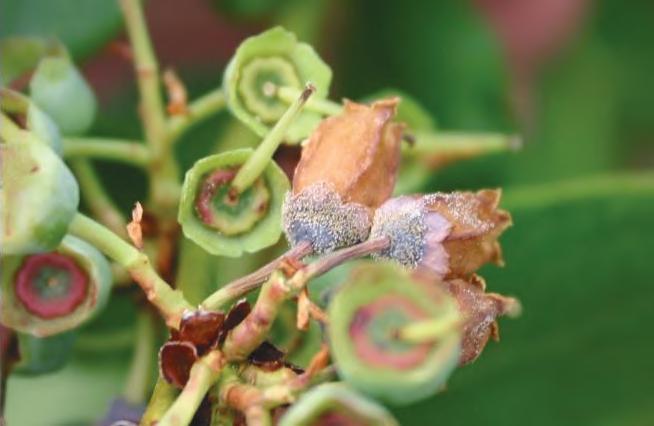

before it can develop (Fig. 1). During periods of high relative humidity, look for a fine white-to-gray fuzz of fungal spores to be produced on infected plant parts, particularly sepals (Fig. 2). If the blight continues, an entire cluster of berries can be aborted (Fig. 3). When disease is significant, the reduction in the number of earlyseason berries can become economically important, and this most often
continued on page 17
FloridaBlueberryGrowers.org The Blueberry News | 15 grower's thoughts
Figure 1. Corollas of southern highbush blueberry infected with Botrytis cinerea. Credit: P. Harmon
Figure 2. Gray sporulation of Botrytis cinerea is observed on the corolla and calyx of flowers after an extended period of high relative humidity. Brown corollas that remain on the bush and gray sporulation are good diagnostic symptoms of Botrytis blossom blight. Credit: P. Harmon
topic of the season
continued from page 14
PETAL FALL THROUGH ONE MONTH AFTER BLOOM DISEASES AND PESTS, CONT.
areas. On susceptible varieties, rust can prematurely defoliate plants. Where leaves are not dropped in winter, rust can carry over on the previous year's foliage and can cause rust problems in early spring as well. Bravo Weather Stik® is labeled for control of both rust and Septoria leaf spots; this chlorothalonil product makes an excellent rotation partner for the strobilurin-containing products Abound® or Pristine®. However, Bravo Weather Stik® can only be used after harvest because chlorothalonil will damage fruit. See Table 1 and EDIS publication PP348, “Florida Blueberry Leaf Disease Guide” (https://edis.ifas.ufl.edu/publication/PP348).
BLUEBERRY BUD MITE
The blueberry bud mite is an eriophyid mite so tiny (i.e., 1/125 inch long) that it cannot be seen without magnification. Blueberry bud mite is an occasional pest in well-established blueberries in Florida. Bud mite injury is often confused with frost damage and may become more visible in late spring. In early spring, infested plants exhibit stunted, succulent, fleshy, closely packed, reddish, and rosetted buds, which may dry up and often fail to open. Bloom on infested plants is reduced. Affected berries are small and rough and may have small, reddish pimples or blisters on the fruit surface. Sanitation by aggressive, timely pruning of infested branches can be helpful. Mechanical topping (i.e., mowing old fruiting twigs) immediately after harvest greatly reduces bud mite incidence the following year. Bushes that may be infested with blueberry bud mite should never be used for propagation. The application of horticultural oil immediately after harvest can help in the control of blueberry bud mite. A new miticide, Magister® (fenazaquin) was recently registered in blueberries and should provide some protection against eriophyids. The insecticide Apta® (tolfenpyrad) should also provide protection against eriophyids. Blueberry bud mites belong to this group. Conventional insecticides such as pyrethroids have miticidal effects and can be used to help reduce bud mite infestation. See Table 2 and EDIS publication ENY-858, “Blueberry Bud Mite (Acalitus vaccini (Keifer) on Southern Highbush Blueberry in Florida” (https://edis.ifas.ufl.edu/publication/IN844).
SPIDER MITES
The southern red mite is the key spider mite pest attacking blueberry plants in Florida. Southern red mites primarily infest the lower side of the leaf, giving the leaf a bronzing appearance when the population is high. Southern red mites also produce a protective web made of silk over the infested surface to protect them from predators. The underside of leaves should be closely examined with a 10x hand lens for adults, shed skins, and webbing. Tapping foliage onto a sheet of white paper can also be used to find adult mites. A few miticides, including fenazaquin (Magister®), fenpyroximate (Portal®) and acequinocyl (Kanemite®), have recently been labelled for spider mites. See Table 2 and EDIS publication ENY-1006, “Mite Pests of Southern Highbush Blueberry in Florida” (https://edis.ifas.ufl.edu/publication/IN1284).
TABLE 1. DISEASE MANAGEMENT OPTIONS
Resistance to this fungicide in the ripe rot pathogen is common in central Florida. Use a Captan product in a tank mix where resistance is known. Subsequent applications can be made at 7-to-14-day intervals. Do not apply more than two sequential applications before switching to a fungicide with another mode of action (e.g., Switch®). Do not apply more than 1.44 qt per acre per season.
Applications can be made at 7-to- 10-day intervals when conditions warrant. Do not apply more than 56 oz of product per acre per year. Make no more than two sequential applications before using another fungicide with a different mode of action.
Pyraclostrobin
12 h 0 days
Resistance to this fungicide in the ripe rot pathogen is common in central Florida. Use a Captan product in a tank mix where resistance is known. Do not mix Pristine® with anything other than Captan.

Do not apply later than 3 weeks after full bloom.
Do not apply more than 70 lb per acre per crop year.
continued on page 18

16 | The Blueberry News FloridaBlueberryGrowers.org
Disease/ Pest Problem Management Options Amount of Formulation per Acre Effectiveness (Least = + to most = +++++) REI (restricted entry interval) PHI (postharvest interval) Comments Anthracnose (ripe rot) and Alternaria rots Azoxystrobin (Abound®) 6.2–15.4 fl oz +++++ 4h 0 days
Cyprodinil + fludioxonil (Switch® 62.5WG) 11–14 oz +++++ 12 h
0 days
oz +++++
+ boscalid (Pristine®) 18.5–23
76DF) 3 lb ++
Ziram (Ziram
48 h ~30 days
5 lb +++
Captan (Captan 50 WP)
48 h 0 days
grower's thoughts , continued from page 15
occurs in years where cold snaps require extended periods of overhead irrigation for freeze protection (Fig. 4). After pollination of a flower and drop of the corolla occur, the risk of direct losses decreases; however, infection of developing fruits can continue.
Botrytis blossom blight on a cluster of flowers. The flowers that produced the immature fruits (top) developed before the cool wet period and escaped infection. Some of these fruits could be infected, but they will likely mature if no further periods of disease-favorable weather occur. Credit: P.
The extent that these developing, green-fruit infections reduce the crop is determined by the weather and to a certain extent, fungicide applications. During cool and wet periods, or if overhead irrigation is used, infected berries develop to be deformed and soft, often rotting on the bush at the time of ripening (Fig. 5). Not all infected fruit rot before harvest, with the pathogen lying dormant (latent) in some fruit until it is stored cool and humid after harvest. These latent infections then cause gray mold, the gray fuzzy rot commonly observed on unsold blueberries in grocery stores.

fruits.
DISEASE MANAGEMENT
Managing diseases caused by Botrytis is best achieved with an integrated approach. Horticultural inputs include relying on drip irrigation except for the judicious use

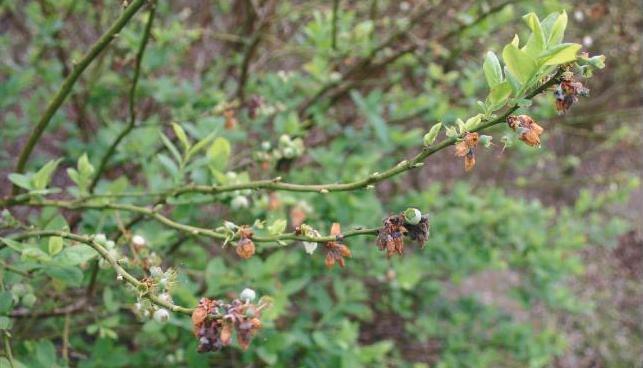
of overhead irrigation for freeze protection when necessary. Good weed management and pruning practices can help reduce sources of inoculum and increase air flow through the bush canopies. Hand harvesting berries can reduce introducing rotten and soft pick to the sorting and packing lines while also reducing fruit bruising and damage that can spark the development of latent infections into gray mold post-harvest. Careful transport and rapid cooling of fruit also help prevent damage and drastically slow the growth of Botrytis in harvested fruit, preventing secondary spread and prolonging the shelf life of the berries.
Chemical pesticide options are available to help prevent infection and slow disease development as well. Fungicide applications prior to, during, or immediately following extended cool wet periods during bloom are the most likely to limit bloom infection and direct losses. If Botrytis becomes established at bloom, fungicide applications later in the season may be required to manage spread of the fungus to ripening berries. Applications at this time are
continued on page 28
FloridaBlueberryGrowers.org The Blueberry News | 17
Figure 4. Many of these blighted flowers will not produce fruit. A preventative fungicide application could have protected the blossoms during the favorable weather conditions and may have limited disease development. Credit: P. Harmon
Figure 3. Severe symptoms of
Harmon
Figure 5. Some blueberry fruits rot or become shriveled and deformed if the flowers are infected by Botrytis at bloom. Diseased berries that remain on the bush produce inoculum capable of infecting other ripening
Credit: P. Harmon
topic of the season
continued from page 16
TABLE 1. DISEASE MANAGEMENT OPTIONS, CONT.
Azoxystrobin (Abound®)
6.2–15.4 fl oz ++++ 4h 0 days
not make more than three applications per acre per crop year. Alternate with a fungicide with another mode of action.
Anthracnose, septoria, target spot, and rust leaf diseases
Pyraclostrobin + boscalid (Pristine®)
up
2 applications
year on a 7–10 day schedule. A tank mix with Captan is recommended for resistance management and to provide Botrytis suppression.

Do not apply more than 54.7 fl oz per acre per year. Rotate to a different fungicide group after no more than 2 applications. Reapplication interval is 7 to 14 days. Only Luna Tranquility is labeled by supplemental label for blueberry in Florida.
Subsequent applications can be made at 14-day intervals. Consider tank mixing with Captan or Bravo. When hedging is conducted immediately following harvest, this is a good time to consider an application. Do not exceed 1.44 qt per acre per season. Do not apply more than two sequential applications of Abound® before switching to a fungicide with another mode of action.
18.5–23 oz ++++ 12 h 0 days No more than two sequential applications of Pristine® should be made before alternating with fungicides that have a different mode of action. Do not apply more than four applications of Pristine® per acre per crop year.
oz +++ 12 h 30 days
12 h 7 days Do not make more than three applications per acre per crop year. Alternate with a fungicide with another mode of action.
Do not make more than four applications or apply more than 8 oz of Indar® 2F (0.38 lb active) per acre per year. Indar® 2F belongs to the sterol demethylation inhibitor (DMI) class of fungicides. Alternation with fungicides of different classes is recommended. Metconazole (Quash®)
Propiconazole (Tilt®) 6.0 fl oz +++ 24 h 30 days
Tilt®, another DMI fungicide, may be applied by ground or aerial application (see label). Do not apply more than 30 fl oz per acre per season. Tilt® is more effective when it dries ahead of a rain.
Prothioconazole (Proline® 480 SC) 5.7 fl oz ++++ 12 h 7 days Make up to 2 applications per year on a 7–10 day schedule.
Chlorothalonil (Bravo Weather Stik®) 3–4 pt ++++ 12 h (with restrictions) 6.5 days (w/o)
Cyprodinil + fludioxonil (Switch® 62.5WG)
Fluopyram + pyrimethanil (Luna Tranquility®)
42 days Apply only as a postharvest fungicide for Septoria and rust. Do not combine with other pesticides, surfactants, or fertilizers.
11–14 oz +++ 12 h 0 days Applications can be made at 7-to- 10-day intervals when conditions warrant. Do not apply more than 56 oz of product per acre per year. Make no more than two sequential applications before using another fungicide with a different mode of action.
16–27 fl oz ? 12 h 0 days Do not apply more than 54.7 fl oz per acre per year. Rotate to a different fungicide group after no more than 2 applications. Reapplication interval is 7 to 14 days. No efficacy data for this product are available for blueberry in Florida. Only Luna Tranquility is labeled for blueberry in Florida.
continued on page 22

18 | The Blueberry News FloridaBlueberryGrowers.org
Disease/ Pest Problem Management Options Amount of Formulation per Acre Effectiveness (Least = + to most = +++++) REI (restricted entry interval) PHI (postharvest interval) Comments Anthracnose (ripe rot) and Alternaria rots continued Captan (Captan 4L®) 2 qt +++ 48 h 0 days Do not apply more than 35 qt per crop year. Fluazinam (Omega® 500F) 1.25 pt ? 12 h 30 days Do not use more than 7.5 pt per acre per season.
an adjuvant. Metconazole (Quash®) 2.5 oz ? 12 h 7 days Do
Prothioconazole (Proline® 480 SC) 5.7 fl oz ? 12 h 7 days Make
Fluopyram + pyrimethanil (Luna Tranquility®) 13.6–27 fl oz ? 12 h 0 days
Do not tank mix with
to
per
2.0
Fenbuconazole (Indar® 2F)
2.5
oz +++
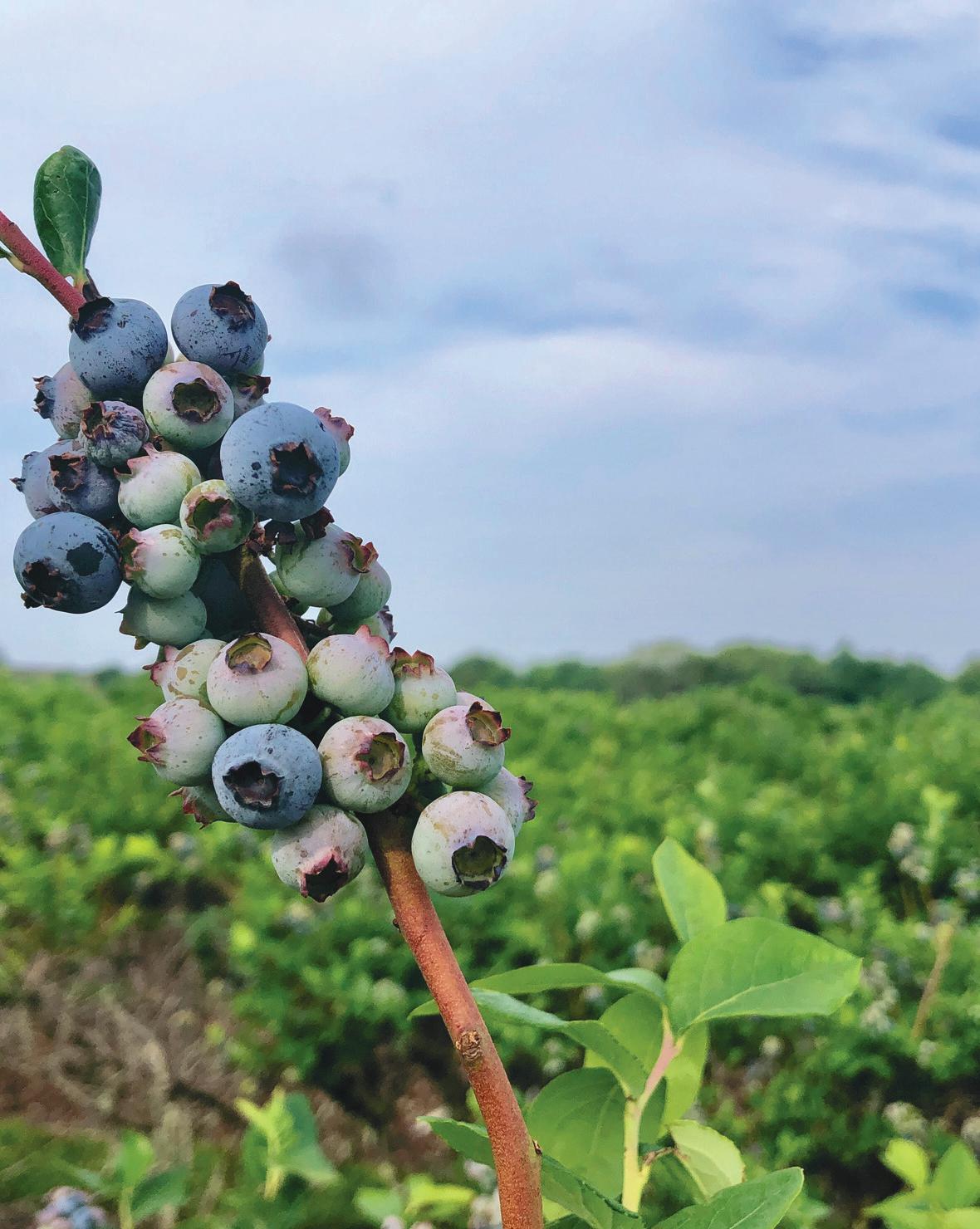


AG LOANS: HOME LOANS: Financing for Farms, Homes & Land FarmCreditFlorida.com 1-866-824-5626 HOW FARM CREDIT CAN HELP YOU! The obligation to pay patronage is established by the Association bylaws and board resolutions. Distributions are made only if capital requirements are achieved. Only eligible borrowers can participate in the Patronage Refunds Program. Crop Insurance Farm Credit Express OTHER SERVICES: Operating Expenses Farm Improvement Equipment Barns Livestock Vehicles Construction to Perm Home Purchases Residential Lots Home Improvements Refinancing LAND LOANS: Agricultural Real Estate Residential Lots Large Acreage Vacant Lots
NELSON KIRKLAND, Publisher

Ready for Winter?
AS WE RANG IN THE NEW YEAR, many of us were thankful that Jack Frost was no longer nipping at our nose … or crops, for that matter.
Florida experienced its coldest Christmas in 33 years, and while some people may have hoped for a white Christmas (I’m not naming names, but I was not one of them),it made for a nerve-wracking holiday weekend for those with fragile crops out in their fields.
Thankfully, reports from across the state showed that Florida crops seemed to escape damage from the unusual early cold snap. Nonetheless, it was a powerful reminder for the state’s blueberry growers that the brunt of winter is still to come, and it comes at a crucial time for our crop.
January is typically the coldest month of the year for Florida, and that means the potential for many long nights ahead.
On page 10, you can find a detailed checklist for freeze protection, and there is even more information available in this previous Blueberry News article: https://bit. ly/3EW5eEE.
Newest Cultivar ‘Albus’ Set for Release This Summer
THE UF/IFAS BLUEBERRY breeding program has developed many southern highbush blueberry cultivars, which make up most of the commercial production acreage in Florida today. In 2021, the program released “Sentinel,” a vigorous, early-season, high-yielding cultivar that has scored high in consumer taste panels. It has performed well in both NorthCentral and Central Florida trial sites, and trials are being conducted in South-Central Florida to determine its production in that region.
The newest UF cultivar is “Albus,” which was approved for release this summer. It is a vigorous, high-yielding, early through late season cultivar for the evergreen production system. The fruit is very firm with a heavy wax bloom (the name “Albus” is Latin for white, referring to the very light berry color due to its bloom), and it has received high scores in consumer taste panels. It begins harvesting early and continues through the end of the Florida season. “Albus” was selected for the Central Florida region, and trials are underway to determine its production in the South-Central Florida area. Machine harvesting trials will be conducted during the upcoming 2023 season.
Cultivar name: Albus (selection code “FL11-51”)
Region best adapted to: Central Florida
Production system: performs well in the evergreen system in Central Florida; additional data to be gathered for performance in South-Central FL
Hydrogen cyanamide: not required
Machine Harvestability: no data yet; trials to be conducted in 2023
Per plant yields:
• Central FL (2022): 8.9 – 9.0 lbs/plant, average 9.0 lbs/plant
Known disease susceptibility: none observed to date
Known insect damage susceptibility: moderate level of susceptibility to chilli thrips observed, similar to other cultivars
Fruit quality data:

• Fruit firmness: 208 – 319 g/mm, average 259 g/mm, higher than “Farthing” and “Optimus”
• Berry Weight: 1.5 – 2.3 grams, average 1.9 grams, similar to “Kestrel”
• Berry Diameter: 14.5 – 18.3 mm, average 16.4 mm, similar to “Avanti”
• Brix: 8.9 – 13.8, average 11.4, similar to “Emerald”
• Brix/Acid Ratio: 18.1 – 69.5, average 36.7, similar to “Avanti”
• Fruit scar: normal (small, dry), similar to “Emerald”
• Wax/bloom: heavy
Here’s to a prosperous new year for the Florida blueberry industry!
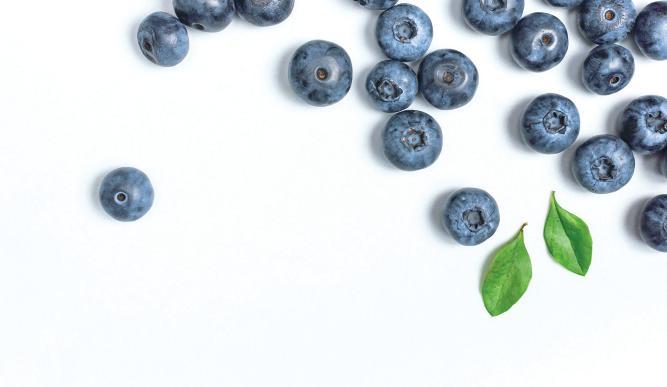
• Fruit defects: none
• Flavor: high flavor score from taste panels (33.0), Above the average (28.3) and slightly below the positive control (35).
• Aroma: low
continued on page 32
20 | The Blueberry News FloridaBlueberryGrowers.org
interlude publisher, s
UF blueberry breeding program update

FLORIDA BLUEBERRY NURSERY DATA DRIVEN GENETICS FOR SUPERIOR PERFORMANCE! CELEBRATING 34 YEARS PROVIDING EXCEPTIONAL QUALITY PLANTS. CALL OR TEXT DAVID WEBER 863 287-3839 FLORIDABLUEBERRYNURSERY.COM WinterSweet INTRODUCING A NEW EARLY BLUEBERRY VARIETY FOR CENTRAL FLORIDA • High yielding early performance • Non-acidic large quality fruit • Vigorous growth, excellent leaf disease tolerance • Excellent choice for evergreen or organic Booking orders for 2022-3 Winter Bell | Sentinel | Avanti | Arcadia also available
topic of the season
continued from page 18
TABLE 1. DISEASE MANAGEMENT OPTIONS, CONT.
Make the first application during early bloom. Subsequent applications should be made every 7–10 days during bloom. Do not apply more than 56 oz of product per acre per year. Make no more than two sequential applications before using another fungicide with a different mode of action.
Begin application at 10% bloom. Applications should be made every 7 days when conditions favor disease. Resistance is known to occur; do not make more than two consecutive applications without switching to a fungicide with a different mode of action. Do not apply more than 6.0 lb of product per acre per year.
Resistance is known to occur; no more than two sequential applications of Pristine® should be made before alternating with fungicides that have a different mode of action. Do not apply more than four applications of Pristine® per acre per crop year. Do not mix Pristine® with anything other than Captan.
Fluopyram + pyrimethanil (Luna Tranquility®)
13.6–27 fl oz ? 12 h 0 days Do not apply more than 54.7 fl oz per acre per year. Rotate to a different fungicide group after no more than 2 applications. Reapplication interval is 7 to 14 days.
Ziram (Ziram 76DF) 3 lb ++ 48 h ~30 days Do not apply later than 3 weeks after full bloom.
Captan (Captan 50WP) 5 lb ++ 48 h 0 days Do not apply more than 70 lb per acre per crop year.
Captan (Captan 4L®) 2 qt ++ 48 h 0 days Do not apply more than 35 qt per acre per crop year.
Fosetyl-Al (Aliette® WDG) 5 lb +++ 12 h 12 h Apply Aliette® as a foliar spray for Phytophthora and Pythium root rots and Septoria leaf spot. Subsequent applications can be made at 14-to-21-day intervals. Two or three fungicide applications following harvest are generally sufficient to prevent major outbreaks of Septoria leaf spot. Assuming that hedging is conducted immediately following harvest, this is a good time to consider an application. Do not exceed four applications per acre per year.
Phytophthora root rot
Mefenoxam (Ridomil Gold® SL)
3.6 pt ++++ 48 h 0 days
Do not tank mix with copper and foliar fertilizers and do not apply in acidic water or add acidifying agents, because these practices could damage fruit or foliage. When tank-mixing this product with others, test the mix on a small area to make sure that phytotoxicity does not occur.


Established plantings: Apply 1/4 pt/1000 linear feet of row (3.6 pt per acre broadcast basis) in a 3-foot band over the row. One application prior to bloom and one additional application postharvest, approximately 6 months later.
New plantings: Apply 3.6 pt per acre (broadcast rate) at or after planting. An 18-inch band over the row is recommended. Do not apply more than 0.9 gal per acre broadcast during the 12 months before plants bear harvestable fruit, or illegal residues may result. For both new and established plantings, one additional application may be made to coincide with periods most favorable for root rot development.
continued on page 24
22 | The Blueberry News FloridaBlueberryGrowers.org
Disease/ Pest Problem Management Options Amount of Formulation per Acre Effectiveness (Least = + to most = +++++) REI (restricted entry interval) PHI (postharvest interval) Comments
flower blight
+ fludioxonil (Switch® 62.5WG) 11–14 oz +++++ 12 h 0
Botrytis
Cyprodinil
days
(Elevate® 50 WDG) 1.5 lb. +++++ 12 h 0 days
Fenhexamid
Pyraclostrobin + boscalid (Pristine®) 18.5–23 oz +++++ 12 h 0 days
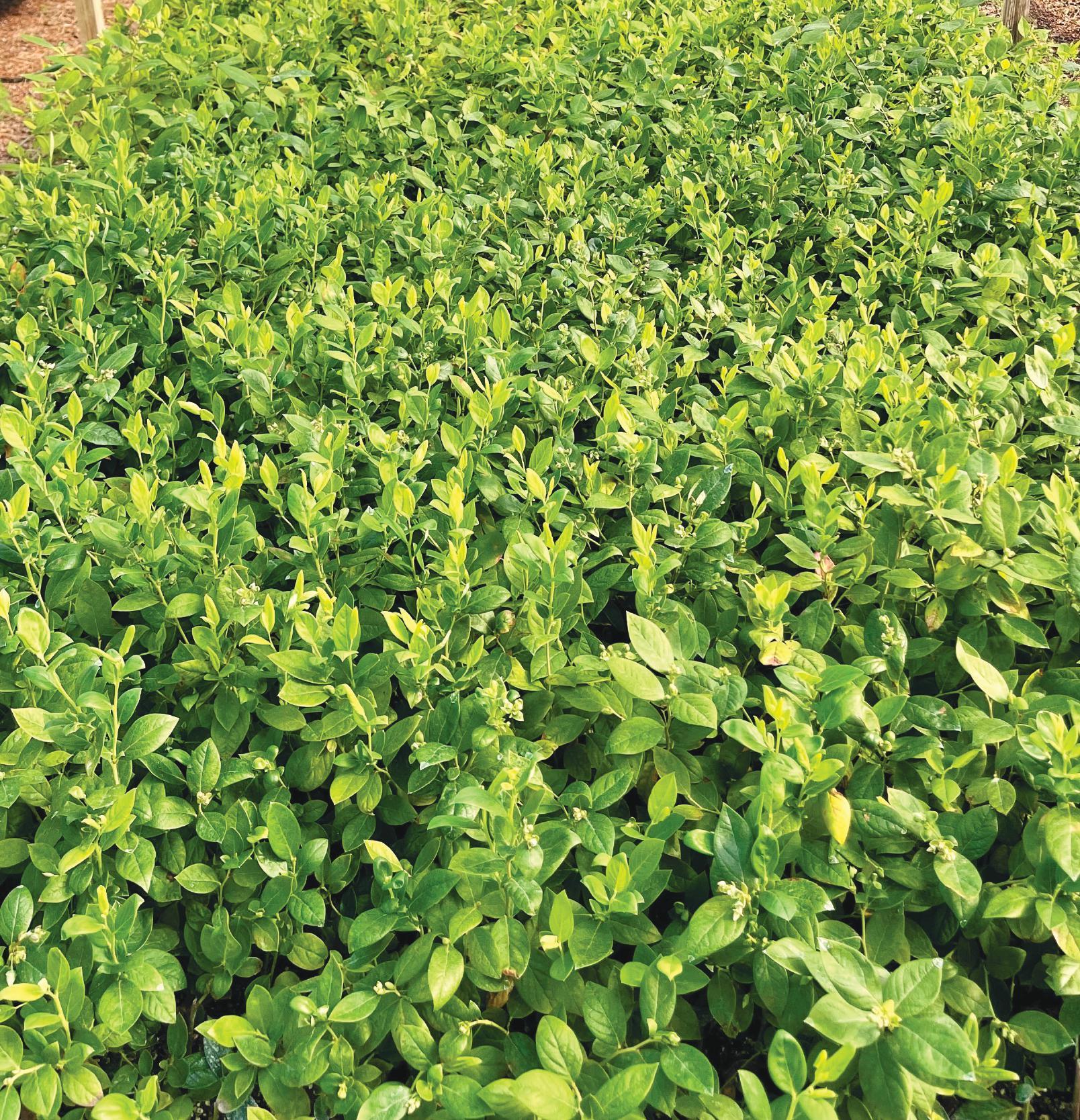


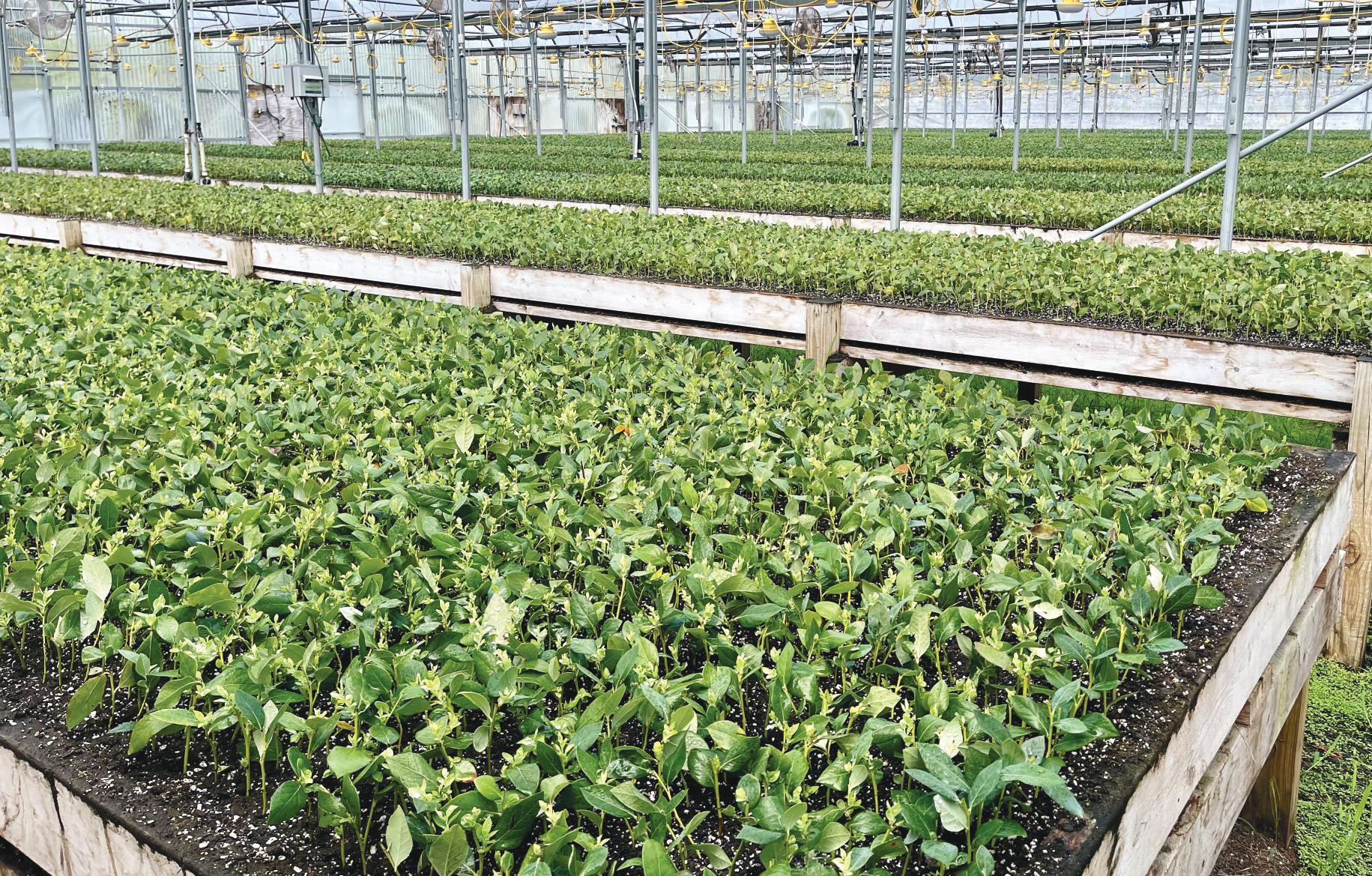
Call today to secure your order! 352 562-2583 Fergusonberries@gmail.com Silver Springs, FL New releases coming soon! Arcadia Avanti Sentinel Available Now High quality bare root transplants and liners, never root bound in containers. Strong healthy plants for quick establishment. Other varieties grown to order. If you want it, we’ll grow it!
topic of the season
continued from page 22
TABLE 1. DISEASE MANAGEMENT OPTIONS, CONT.
Phytophthora root rot
Oxythiopiprolin (Orondis® Gold 200)
Oxythiopiprolin, Mefenoxam (Orondis® Gold)
0 days Apply as a foliar spray for Phytophthora and Pythium. Also effective against Septoria and anthracnose leaf spots. Do not tank mix with copper and foliar fertilizers and do not apply in acidic water or add acidifying agents, because these practices could damage fruit or foliage. When tank-mixing this product with others, test the mix on a small area to make sure that phytotoxicity does not occur.
4.8 to 9.6 fl oz ? 4h 1 day Apply as a soil drench, as a soil-directed spray, or through irrigation system in spring before plants begin to grow, with a follow-up application postharvest prior to the rainy season.
28 to 55 fl oz ? 48 h 1 day Apply as a soil drench, as a soil-directed spray, or through irrigation system in spring before plants begin to grow, with a follow-up application postharvest prior to the rainy season.
TABLE 2. INSECT AND MITE PEST MANAGEMENT OPTIONS
Fenazaquin (Magister® SC) 24–36 fl oz +++ 12 h 7 days Apply in at least 50 gallons of water per acre. Use higher rates for heavier mite pressure. Do not make more than one application per year.
Fenpyroximate (Portal®) 2 pt +++ 12 h 1 day Growers can make two applications per year.
Blueberry bud mite
Horticultural oil (JMS StyletOil®)
Horticultural oil (Stoller Golden Pest Spray Oil)
Spirotetramat (Movento®)
Spinetoram (Delegate® WG)
Acetamiprid (Assail® 30SG)
Blueberry gall midge

3–6 qt/100 gal ++ 4h 0 days Blueberry bud mite cannot be readily seen, and by the time symptoms are observed in the spring, the mites are too deep for effective treatment. Avoid using this product if the temperature is above 85°F.

2 gal (low volume) application or 2 gal/100 gal (dilute spray)
++ 4h 0 days Avoid using this product if the temperature is above 85°F.
5–6 fl oz ++++ 12 h 7 days Do not apply more than 25 fl oz per acre per season.
3–6 oz +++ 4h 3 days Do not apply more than 19.5 oz of Delegate or 0.3 lb a.i. spinetoram per acre per season. Delegate® WG is toxic to bees until 3 h after application when it is thoroughly dry.
4.5–5.3 oz +++ 12 h 1 day Do not apply within 4 days of bloom.
Cyantraniliprole (Exirel®) 13.5–20.5 fl oz +++ 12 h 3 days Do not apply within 4 days of bloom. Minimum application interval between treatments is 5 days. Spinosad (Entrust®) Labeled for organic use
Malathion (Malathion 57 EC)
1.25–2 oz +++ 4h 3 days Entrust® is toxic to bees until it is thoroughly dry (3 hours), but thereafter it is relatively nontoxic to bees. Entrust® should be applied in early morning or late evening during bloom.
2 pt +++ 12 h 1 day Malathion has low toxicity to bees and beneficial insects. continued on page 26
24 | The Blueberry News FloridaBlueberryGrowers.org
Disease/ Pest Problem Management Options Amount of Formulation per Acre Effectiveness (Least = + to most = +++++) REI (restricted entry interval) PHI (postharvest interval) Comments
continued Potassium phosphite (Prophyt®) 4 pt ++++ 4h








topic of the season
continued from page 24
TABLE 2. INSECT AND MITE PEST MANAGEMENT OPTIONS, CONT.
Do not apply more than 19.5 oz of Delegate or 0.3 lb a.i. spinetoram per acre per season. Delegate® WG is toxic to bees until 3 h after application when it is thoroughly dry.
You should allow a minimum of 7 days between applications.
days Entrust is toxic to bees until it is thoroughly dry (3 hours), but thereafter it is relatively nontoxic to bees. Entrust should be applied in early morning or late evening during bloom.
Acetamiprid (Assail® 30 SG) 4.5–5.3 oz +++ 12 h 1 day Do not apply Assail® during bloom. It is an excellent prebloom spray. Application can be made 7 days prior to bloom. Assail® may negatively affect pollinating bees; therefore, application should be made in the late evening. Do not make more than four applications per season.
Tolfenpyrad (Apta®) 27 fl oz/acre ++++ 12 h 3 days Allow 14 days between applications.
Diazinon (Diazinon AG500)
Pyriproxyfen (Esteem® 0.86 EC Ant Bait)
Imported fire ants
1 pt/100 gal ++++ 24 h 7 days
1.5–2.0 lb (2–4 tbsp/ mound) ++++ 12 h 24 h
Mound drench. Slowly apply 1 gal of diluted mixture over and 6 inches around each mound. Apply gently to avoid disturbing ants.
Esteem® Ant Bait should be applied during the spring and, if needed, again in the fall. Apply on sunny days when the soil temperature is at least 60°F and the soil is moist. Baits are slow acting but effective. Allow 4 weeks to work. Do not make other imported fire ant treatments for 7–10 days. May need to reapply if heavy, flooding rains occur within 7 days.
Methoprene (Extinguish® Professional Fire Ant Bait 0.5%)
Diazinon (Diazinon AG500)
Scale
Pyriproxyfen (Esteem® 0.86 EC)
1–1.5 lb (3–5 tbsp/ 1000 sq ft) (3–5 tbsp/ mound)
+++ 4h 0 days
Extinguish® Professional Fire Ant Bait (0.5% methoprene) is legal for use on crop land. Caution: Extinguish baits with methoprene plus hydramethylnon are not labeled for use on crop land. Application during the heat of the day or when rain is expected within 6 hours of application will reduce the effectiveness of this product. In areas of heavy infestation, repeat applications may be necessary 10–12 weeks after the initial application.
1 pt/100 gal +++ 5 days 5 days
1.5–2.0 lb +++ 12 h 24 h
Mineral oil (JMS Stylet oil) 25–150 gal ++ 4h 12 h
Recommended 1–3 gallons per 100 gallons of water. Avoid using this product if the temperature is above 85°F.

continued on page 28

26 | The Blueberry News FloridaBlueberryGrowers.org
Disease/ Pest Problem Management Options Amount of Formulation per Acre Effectiveness (Least = + to most = +++++) REI (restricted entry interval) PHI (postharvest interval) Comments
gall midge, continued Diazinon (Diazinon AG 500) 1 pt +++ 5 days 7 days Do not apply within 4 days of bloom. Tolfenpyrad (Apta®) 27 fl oz/acre ++ 12 h 3 days Allow 14 days between
Flower thrips Spinetoram
WG) 6 oz +++ 4h 3
Flupyradifurone (Sivanto® 200 SL) 2–4 fl oz/acre +++ 4h 3
Spinosad (Entrust®) Labeled for organic use 1.25–2 oz +++ 4h
Blueberry
applications.
(Delegate®
days
days Sivanto®
3


FloridaBlueberryGrowers.org The Blueberry News | 27 When one cold night can ruin an entire year’s hard work... It’s best to play it safe. Since 1967, we have hand-crafted our wind machines with precision technology. We take pride in the details, which is why blueberry growers from around the world trust Orchard-Rite® wind machines to protect their mature stock and new plantings from the dangers of frost. We are dedicated to serving you and your crops by providing the tools, knowledge and service to stave off those frosty nights, protecting your harvest and your future. Superior Wind Machine Sales & Service 616-971-8177 orchard-rite.com Authorized Distributor of Orchard-Rite® Wind Machines SUPERIOR WIND MACHINE SERVICE, INC. Over 37,000 SOLD Worldwide!
topic of the season
continued from page 26
TABLE 2. INSECT AND MITE PEST MANAGEMENT OPTIONS, CONT.
grower's thoughts , continued from page 17
generally less efficient and effective for disease management than those made during bloom.
Fungicides labeled for Botrytis control on blueberries in Florida are listed in Table 1. Captan is a costeffective fungicide that will prevent infection and Botrytis blossom blight development if applied preventatively. Some of the newer, site-specific, systemic fungicides listed in Table 1 have provided excellent control in university trials when applied preventatively, as well as soon after favorable conditions occur, but before symptoms are apparent. However, resistance to site-specific fungicides is a real concern with this pathogen. Florida blueberry isolates have been shown to be resistant to multiple fungicide groups. Resistance management strategies are included on the labels of products containing
site-specific fungicides and should be followed. Each of the different fungicides in Table 1 has a different mode of action and can be rotated as part of a resistance management plan. Fungicides with low resistance risk can be used in mixtures with site specific products to help prevent management failure due to resistance. Each product's specific label instructions
should always be read and followed carefully as changes may have occurred since this text was written. For additional information concerning fungicide products and other integrated approaches to blueberry production in Florida, see the 2022 Florida Blueberry Integrated Pest Management Guide (https://edis.ifas. ufl.edu/publication/HS380).

Table 1. Fungicides for control of Botrytis cinerea on blueberry.

28 | The Blueberry News FloridaBlueberryGrowers.org
Disease/ Pest Problem Management Options Amount of Formulation per Acre Effectiveness (Least = + to most = +++++) REI (restricted entry interval) PHI (postharvest interval) Comments Scale, continued Imidacloprid (Admire® Pro) 10 fl oz +++ 12 h 3 days Foliar application. Spider mites Fenazaquin (Magister® SC) 24–36 fl oz ++++ 12 h 7 days Apply in at least 50 gallons of water per acre. Use higher rates for heavier mite pressure. Do not make more than one application per year. Fenpyroximate (Portal®) 2 pt ++++ 12 h 1 day Growers can make two applications per year. Acequinocyl (Kanemite® 15 SC) 31 fl oz +++ 12 h 1 day Do not apply this product through the irrigation system. Allow a minimum of 21 days between applications. Horticultural oil (JMS StyletOil®) 3–6 qt/100 gal ++ 4h 0 days Avoid using this product if the temperature is above 85°F. Horticultural oil (Stoller Golden Pest Spray Oil) 2 gal (low volume) application or 2 gal/100 gal (dilute spray) ++ 4h 0 days Avoid using this product if the temperature is above 85°F.
Common name Trade name Activity FRAC Group fenhexamid1 Elevate 50 WDG local systemic 17 cyprodinil1, fludioxonil Switch 62.5 WG local systemic 9, 12 boscalid1, pyraclostrobin1 Pristine local systemic 7, 11 captan Captan 50 WP contact M4 ziram Ziram contact M3 1 Risk of resistance. Resistance management required for these fungicides. _________ CREDIT
DR. PHIL HARMON, Professor, Plant Pathology, UF/IFAS & DOUG PHILLIPS, Blueberry Extension Coordinator, UF/IFAS
Stakes & Wraps
I recently took over the stakes and wrap sales for H&A Packing. As you make plans for 2023 season on your planting options, please feel free to contact me if you need to purchase any.

Pine Bark

For those of you who might not be familiar with what we are o ering, we have been using these at our farms for the last three years with great results. The cost for the set of stake/wrap is $0.72 cents. Although it is more than what you might spend with OJ cartons, you will not have to purchase new ones each year. The wraps we sell are plastic and the stake is made from fiberglass. Here are the benefits:
• They help blueberry plants stay upright
• They protect the blueberry stem from herbicide application, which in turn will help with fewer dead plants. This is because the herbicide will not create an open wound that would be a gate way to pathogens that will infect the plant with diseases.
• They will minimize plant loss from heavy storms and strong winds that might knock them over

• When we do freeze protection and ice builds on the blueberry plant the stake and wrap will minimize potential plant loss, by keeping them up right


• We are seeing more branches developing on our blueberry plant, which in turn will create more blueberry production per plant
• During machine harvest it helps protect your blueberry plants from the batting around that happens with the harvest machine

If you are interested in using them for the 2023, please let me know by the end of this month on how many you will need. This way I can get them pre-ordered for you and have them available for your farm after the domestic season.
As always you can call, text, or email me with any questions.
The Blueberry News | 29 Call Diego X. Vargas at 407-625-6436 or email diego.vargas@handafarms.com
For Blueberry Growers only
Variety Is Key
Managed Bumble Bees Are a Great Way to Bolster Pollination
Are
they right for me?
Managed bumble bees are a great option for supplementing existing pollination on blueberry farms. Bumble bees are especially valuable in cases where pollination problems such as insufficient fruit set, underperforming cultivars, and poor pollinator visitation are occurring. Due to their differing behaviors, higher pollination efficacy, and extended foraging compared to honey bees, managed bumble bees may act as a biological insurance policy.
Having a diverse assemblage of bees present on blueberry farms is the best way to ensure sufficient pollination. This can be accomplished by promoting native bee populations as well as stocking both managed honey bees and bumble bees. Bumble bees are capable of buzz pollinating, a behavior that allows them to vibrate flowers and induce the release of more pollen. The ability to buzz pollinate is among the primary factors that make bumble bees more effective per visit than honey bees, depositing over 3x more pollen per visit (Sun et al. 2021). Bumble bees also visit more flowers per minute of foraging and are actively foraging for longer periods each day (Sun et al. 2021). They are also capable of foraging in weather conditions that honey bees do not. Managed bumble bees have also been shown to be more reliable pollinators in covered settings such as high tunnels and greenhouses and are recommended for those production systems.
Previous research at the University of Florida found that increas-
ing stocking density of bumble bees on blueberry farms in Florida led to increased bumble bee visitation and crop yield (Mallinger et al. 2021). Meanwhile, similar increases in honey bee stocking density far above recommended rates did not reliably improve honey bee visitation or crop yield (Mallinger et al. 2021). These results indicate that bumble bees can be an effective strategy to boost pollination. If blueberry farmers are still dissatisfied with pollination when honey bee stocking densities are met, they may be better off investing additional money into managed bumble bees rather than stocking honey bees at rates exceeding recommendations. Managed honey bees remain the primary way for farmers to secure pollination services, but bumble bees can act as a valuable supplement when the recommended honey bee stocking rate has already been met.
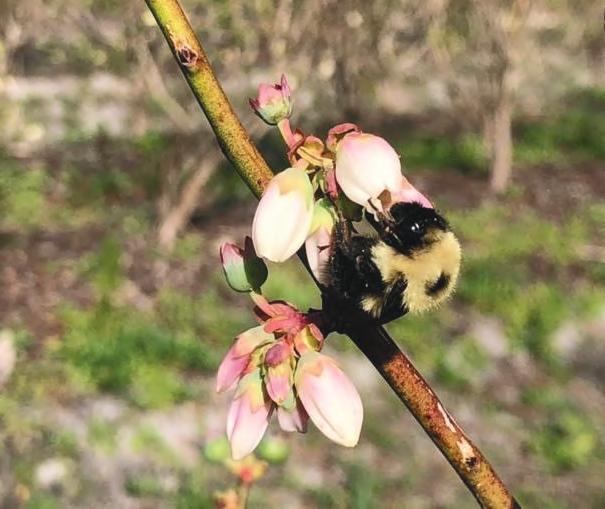
What are they?
The Common Eastern Bumble Bee (Bombus impatiens) is a bumble bee species native to the Eastern United States (Image 1). These bumble bees
can be found nesting belowground with over 450 individuals at their peak colony size (Michener 1974). Within their native distribution, they can be found in all habitat types and are generalist pollinators that will collect pollen and nectar from a wide variety of flowering species. Like honey bees, bumble bees are social insects with colonies made up of a queen that reproduces and worker bees that care for offspring and collect resources for the colony. These features make bumble bees excellent pollinators and highly valuable for crop production. This value has led to bumble bees being reared for commercial use, where they can be placed in targeted cropping systems throughout the year. Within their native range in the Eastern U.S., these bees can be placed in open field settings as well as high tunnel and greenhouse production systems.
How to get them?
There are two primary suppliers of managed bumble bee colonies for crop pollination — Koppert and Biobest. Each of these companies offers several bumble bee products, but
30 | The Blueberry News FloridaBlueberryGrowers.org research
Figure 1. A Common Eastern Bumble Bee (Bombus impatiens) visiting a flower on a Florida blueberry farm.
the most used and best value option for crop pollination is the “Quad” or “4-Pak Hive” for each respective company. These boxes contain four separate bumble bee colonies of approximately 250 workers each. The duration of the colony will vary based on crop and environmental factors but a minimum of 6 weeks of pollination services should be expected. Orders should be placed at least three months in advance to ensure that bees will be available in the desired quantities as blueberry bloom approaches. Recommended stocking densities have not yet been published for Florida blueberry production. However, most growers utilizing bumble bees stock them at a rate of 1 “Quad” or “4-Pak Hive” per 2-5 acres of crop (Mallinger et al. 2021). The recommended date of delivery will vary based on the environmental conditions and cultivars present, but it is recommended to place bumble bee hives at the beginning of crop bloom. Orders can be pushed back to better match crop flowering, but any adjustments should be made at least a week in advance of the previously scheduled delivery date. All hives will be shipped overnight to arrive on the scheduled delivery date. When bees are delivered, it is best to place them in the field as soon as possible so they aren’t left outside in direct sunlight, rain, or strong winds for extended periods of time.
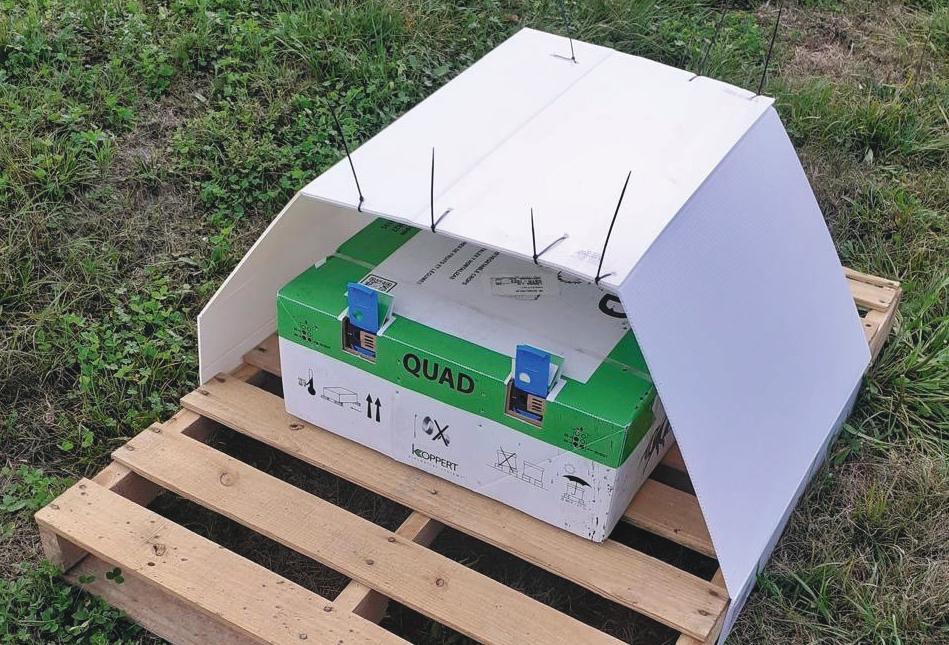
How to use them?
Placement in the field is very important to attain optimal pollination services. In open field settings, bumble bee colonies should be placed adjacent to or within the focal blueberry crop. Bumble bees will most frequently visit fields with flowering crops that are nearby and are less likely to visit distant fields. For this reason, especially on larger farms, it is best to place bees evenly throughout the plot or on each edge of a focal field instead of placing all boxes in one location. In high tunnel settings, boxes can be placed inside of the tunnel with the
hive doors parallel to the crop rows. It is also important to place bumble bees in a different location than any honey bee hives that are present with at least 100 yards separating them if possible. Honey bees have been observed entering bumble bee colonies, likely in search of collected floral resources. These interactions may cause reduced pollination services and reduced bumble bee colony survival in extreme cases.
Once a suitable location is selected, bees should be placed on a horizontal platform elevated off the ground to avoid water and pests from entering the box. Palettes or concrete blocks are good options to elevate boxes. In both cases, a large stone or brick should be placed on top of boxes so that they don’t blow away. It is also recommended to provide the box with cover to avoid direct sunlight and rain (Image 2). On days where the ambient temperature is above 77°F, shade is necessary to keep the colonies from overheating. A piece of corrugated plastic sheet acting as a sloped roof or tented structure above the box is sufficient for providing shade. While this is recommended, it
is not as crucial to bumble bee colony health during blueberry bloom due to the cooler temperatures and the water-resistant material of the boxes. In other cropping systems where pollination is needed when the ambient temperature is higher, shade structures are required for optimal results.
Once boxes are placed in the field you should wait at least 30 minutes before releasing the bees. This will allow for them to calm down from the stress of being shipped and moved. Bees can be released by setting the doors on each of the four colonies to “in and out.” The “in and out” setting will allow bees to enter and exit the hive normally and provide pollination services. If boxes must be moved during the season, gloves and protective clothing are recommended. Prior to moving boxes, the plastic doors can be set to “in-only” and bees will be able to return to the colony but won’t be able to exit again. After 2 hours, nearly all bees that were away should have returned and the colony can be safely moved in the evening. However, moving colonies after initial placement is not recommended and can lead to increased risk of stings.
continued on page 34
FloridaBlueberryGrowers.org The Blueberry News | 31
Figure 2. The recommended structure for a Quad or 4-Pak Hive of managed bumble bees. The palette keeps the box off the ground while the corrugated plastic sheet provides shade and rain cover.
bug of the month , continued from page 13
feeding they transfer a substance or toxin that causes the bud tissue to become roughened and blistered in appearance. Persistent feeding by large numbers of mites results in reddening and swelling of the base of the bud scales, which can cause a rosetted appearance (Figure 1a and 1b). The bud may dry out and turn brown due to mite feeding and fail to open. Flowers and berries developing from buds with mite feeding injury usually have small blisters and pimples (Figure 2). Summer bud mite generations cause slower leaf growth, and this reduced vegetative growth can impact the following year’s crop.
DETECTION
From January through May the presence of blueberry bud mites should be relatively easy to detect by looking for
the distinctive red blisters on bud scales, flowers, or fruit. From June through December, bushes exhibiting desiccated or swollen buds may harbor blueberry bud mites. These symptoms may be noticed first since the mites are not visible without magnification. Infestations can be confirmed by examining the scales of dissected buds under a microscope at 40 X magnification. Some symptoms of blueberry bud mite infestation (e.g., desiccated buds) can be confused with winter injury or hydrogen cyanamide damage.
MANAGEMENT
Because of their nature of feeding and breeding within the blueberry buds, blueberry bud mites are difficult to control using acaricides and can be devastating to plantings if populations are allowed to de-
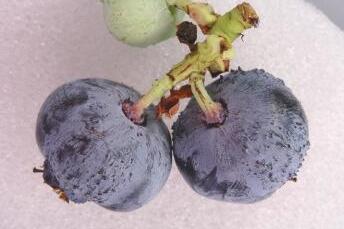
breeding program update
Cultivars on similar flowering time:
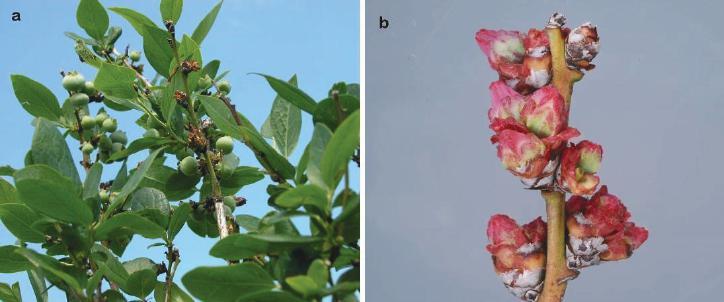
• Central FL – “Sentinel,” “Optimus,” “Arcadia,” “Avanti,” “Chickadee”
Other information: High vigor, with large yield from early through late season. Firm fruit with a heavy wax bloom. Good performance with no disease problems observed.
We are continuously selecting cultivars with a higher yield, good flavor, superior fruit quality, and machine harvestability, among other traits. The blueberry breeding process (recurrent phenotypic selection) is quite time-consuming. It begins with 100-150 sets of parents with favorable characteristics that are cross-pollinated. From those crosses, 20,000 seedlings are planted out in a high-
velop in the fields. However, some of the newer acaricides (including Magister and Portal) have shown some effectiveness in managing bud mites. Reduced-risk pesticides, such as horticultural oils, are less hazardous and can perform with high efficacy. Hirsutella thompsonii, a fungal biocontrol agent with some effectiveness on mites, can also play a role in managing bud mite populations. Management practices for the control of blueberry bud mites include pruning of older branches and removal of infected branches.
CREDIT
DR. OSCAR LIBURD, Professor and Program Leader, Fruit and Vegetable Entomology, UF/IFAS & DOUG PHILLIPS, Blueberry Extension Coordinator, UF/IFAS
, continued from page 20
density nursery at the PSREU in Citra, where they undergo two stages of selection. By stage 3, the original 20,000 seedlings have been pared down to 100-150 selections. These are clonally propagated by softwood cutting and planted out at trial sites in North-Central and South-Central Florida to be evaluated over 2-3 years. The southcentral trial site is used primarily to make selections for the evergreen production system. Following stage 3, 20-25 trial genotypes are advanced to stage 4, where they will be evaluated for 3-4 years for yield, timing, flavor, fruit quality, disease and pest resistance, vigor, and other characteristics. It is from this stage that selections are made for release for commercial production. The
entire process can take between 10 and 12 years. The blueberry breeding program is now incorporating molecular selection methods into the breeding process. Using these methods early in the breeding process has reduced the time required to identify a cultivar for release to half of the previous time. Simultaneously, the program continues to carry out research that helps to keep accelerating the breeding process and to understand the consumer experience with blueberries.
CREDIT
DR. C, Associate Professor, UF/IFAS & DOUG PHILLIPS, Blueberry Extension Coordinator, UF/IFAS
32 | The Blueberry News FloridaBlueberryGrowers.org
Figure 1. Rossetted and desiccated blueberry buds caused by feeding of blueberry bud mite. Credit: Elke Weibelzahl
Figure 2. Pimpled blueberry developing from floral bud infested with blueberry bud mites. Credit: Elke Weibelzahl
_________
_________
To place a classified ad please e-mail info@centralfloridamediagroup.com or call
MY PAYROLL SOLUTIONS LLC has over 18 years of experience in matching small businesses, Agriculture Companies and harvesters to staffing services and employee leasing companies which provide payroll services with workers comp coverage for our clients and providing assistance with H2A applications. For more information contact Jeff H Futch at 863 835-1130
EQUIPMENT FOR RENT
FOR RENT
7 yard rowmulcher, Great for replenishing bark on Blueberry Farms, PTO drive, 30hp tractor needed. Call 863-604-2526 for rental
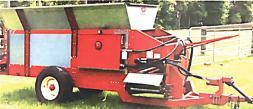
PRODUCTS & SERVICES

AGRI-SOURCE
Producer of Blueberry Pine Bark Products for the Blueberry Industry.

352-351-2700
AIRTEC SPRAYERS
Over the Row Blueberry Sprayers
Lower Volumes, Less Drift, Better Coverage. 863-412-6247 AirtecSprayers.com
CARDEN & ASSOCIATES, INC.
863-291-3505.
Here for the Florida Blueberry Grower…yesterday, today and tomorrow!
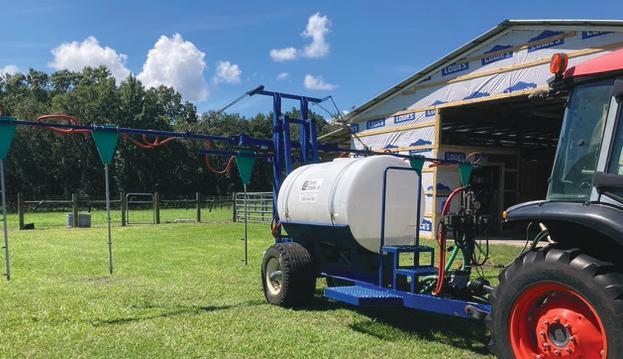
EVERGLADES EQUIPMENT
12 locations in Florida with the Best Lease Program in the Business!
A John Deere Dealer ShopEFE.com
FARM CREDIT OF CENTRAL FL
866-824-5626 Patronage refunds for Smart Farmers and Country Home Owners. Lower costs!

FERGUSON FARMS
Strong healthy plants for quick establishment.
352-562-2583
FIELDS EQUIPMENT CO.,
a John Deere Authorized Dealer. 3 Locations. Small Dimensions, Big Performance. (863) 967-0602 FieldsEquip.com
FLORIDA BLUEBERRY NURSERY
Data driven genetics for superior performance. Celebrating 34 years of providing exceptional quality plants. 863-287-3839
FLORIDA FOUNDATION SEED PRODUCERS, INC.
352-392-9446
Providing Superior Plant Varieties
ISLAND GROVE
352-274-3835
Quality Plants. Superior Service. IslandGroveAgProducts.com
ORCHARD-RITE
performance wind machines are pure and powerful (509) 834-2029 / Orchard-Rite.com
PALOGIX INTERNATIONAL
Plastic rentals, logistic & management solutions. Palogix.com

PERFORMANCE NUTRITION
Empower your soil with soil innoculants and protect against stress (732) 888-8000 pnfertilizers.com
PINE BARK FOR SALE

Blueberry Growers Only, H&A Farms, Call Diego Vargas at 407-625-6436 or email Diego. Vargas@HandAFarms.com


.
Red Blueberry Lugs for sale. Approximately 2500. $1.50 Each For Orders & More Information, Contact Terri Martinez at (352) 409-5009 or email to terri@wildgoosefarms.net
PLANT FOOD SYSTEMS
Advanced Plant Nutrition and Protection. PlantFoodSystems.com
FloridaBlueberryGrowers.org The Blueberry News | 33
(863) 248-7537
RETIREMENT EQUIPMENT SALE • Boom Sprayer • Stand alone Mixer • 2019 48” Kubota Zero Turn Mower, Lugs • Picking Carts • Other miscellaneous items Call Lyna 813-728-9132 BLUEBERRY LUGS BUILD YOUR OWN CLASSIFIED AD @ centralfloridamediagroup. com/placead
research , continued from page 31
At the end of the season, it is crucial that bees are properly disposed of as escaped bees could pose a risk to native bumble bee populations. At the end of crop bloom and no later than 12 weeks post-placement, all doors should be set to “in-only” and subsequently closed. Hives should then be sealed in large plastic bags for 2 weeks or frozen for a week to kill all remaining bees. Once all bumble bees are dead, colonies should be disposed of according to local legislation.
Are they working?
Yes, research has shown that managed bumble bees are effective in Florida blueberry production. It is common for blueberry growers that purchase managed bumble bee colonies to wonder if they are working. This is due to several factors that play into the reason that they are good pollinators in the first place.
Bumble bees live in smaller colonies and are stocked at rates much lower than honey bees; this means that you are less likely to see them as you walk through the field. They also move between flowers faster than honey bees, making them more effective pollinators but also harder to spot. In addition to these factors, bumble bees are also capable of foraging in weather conditions where honey bees are not foraging. On cool mornings or drizzly afternoons when honey bees are in the hive, there are likely still bumble bees foraging. This added pollination is very valuable for fruit set and yield, especially when poor weather conditions persist for several days in a row. Although pollination at these times is valuable it is easily overlooked because growers are not looking for bees in poor weather conditions. When purchasing managed bumble bees,
it is important to recognize that the differences in their behaviors make them a great supplement to honey bees, but it is also more challenging to observe their contributions in real time. Despite this, research has shown that managed bumble bees are a great way for Florida blueberry growers to bolster pollination.
JOHN J. TERNEST, PhD Candidate, University of Florida, Entomology and Nematology Department
Sources Cited
Mallinger, R., Ternest, J. J., & Naranjo, S. M. (2021). Blueberry Yields Increase with Bee Visitation Rates, But Bee Visitation Rates Are Not Consistently Predicted by Colony Stocking Densities. Journal of Economic Entomology, 114(4), 1441-1451. https://doi.org/10.1093/jee/toab111
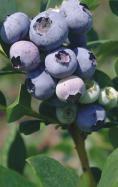

Michener, C. D. (1974). The Social Behavior of the Bees: A Comparative Study. Harvard University Press.
Sun, Q., Zhao, X., Wu, L., Zhao, J., Yang, Y., & Zhang, Y. (2021). Differences in Pollination Efficiency Among Three Bee Species in a Greenhouse and Their Effects on Yield and Fruit Quality of Northern Highbush ‘Bluecrop’ Blueberry. HortScience, 56(5), 603-607. https://doi.org/10.21273/ HORTSCI15714-21




34 | The Blueberry News FloridaBlueberryGrowers.org
Agri-Starts, Inc. is a licensed propagator of Florida Foundation Seed Producers, University of Georgia Research Foundation, and University of Arkansas genetics. COME VISIT US ANYTIME! BLUEBERRIES BLACKBERRIES & MORE! AGRISTARTS.COM (407) 889-8055 - info@agristarts.com 1728 Kelly Park Rd. - Apopka, FL 32712 Agristarts Ad 7.5x5.indd 1 9/9/16 5:59 PM
Virus indexed plants from tissue culture available in 72ct. cell packs & field ready liners.
_________ CREDIT
Winter and Early Spring Blueberry Management Items
______ CREDIT
by DOUG PHILLIPS, UF/IFAS Blueberry Extension Coordinator
Remember to take a look at the UF/IFAS Blueberry Growers Guide phone app (now available in English and Spanish) for field scouting tools, as well as information on monthly management suggestions and all of the UF southern highbush blueberry cultivars.

iOS: https://apps.apple.com/ us/app/uf-blueberry-growersguide/id1535258711
DECEMBER - JANUARY
Disease
Insect
Pests
Weeds
Hydrogen
Cyanamide
Android: https://play.google.com/ store/apps/details?id=co.austn. ss.blueberry










Once bloom occurs, monitor for Botrytis flower blight during cool wet periods. If present, spray suggested fungicides in rotation. Applications of fungicides prior to a forecasted need for overhead irrigation as freeze protection can help reduce Botrytis severity on plants damaged by low temperature injury. See UF EDIS Publication PP198, Botrytis Blossom Blight of Southern Highbush Blueberry (https://edis.ifas.ufl.edu/publication/PP119). Anthracnose (ripe rot) infections can begin as early as bloom; consider preventative fungicide applications, and use the Blueberry Advisory System for notifications of increased disease development risk (http://cloud.agroclimate.org/tools/bas/ dashboard/disease). January - Apply Ridomil to help prevent Phytophthora root rot. See HS1156, 2022 Florida Blueberry Integrated Pest Management Guide ((https://edis.ifas.ufl.edu/publication/HS380).
Continue to monitor for blueberry gall midge and spray suggested insecticides when adults are observed. If traps are not used, spray before floral and vegetative bud break, with a second spray approximately 7-10 days after the first application, following label directions. See UF EDIS Publication ENY-997, Blueberry Gall Midge on Southern Highbush Blueberry in Florida (https://edis.ifas. ufl.edu/publication/IN1239). Also scout for scales, southern red mites and flat mites, flower thrips, and blueberry bud mites, and if observed use applicable control measures. See UF EDIS Publications ENY-1006, Mite Pests of Southern Highbush Blueberry in Florida (https://edis.ifas.ufl.edu/in1284) and HS1156, 2022 Florida Blueberry Integrated Pest Management Guide ((https://edis.ifas. ufl.edu/publication/HS380) for detailed suggestions.
Apply post-emergence herbicide if weeds are at densities that hinder bush growth. See UF EDIS Publication HS90, Weed Management in Blueberry (https://edis.ifas.ufl.edu/publication/WG016).
Consider applying hydrogen cyanamide (marketed as Dormex, and BudPro) in deciduous production systems, in particular those with weak or delayed leaf canopy development and heavy fruit loads. However, at higher concentrations it can cause floral bud injury and reductions in yield, especially in some cultivars that are more sensitive to hydrogen cyanamide, including “Jewel,” “Primadonna,” and “Colossus.” Growers should do test applications by cultivar on small sections to determine safe concentrations. In addition, application should be made before 20% of the floral buds are at or past stage 3 (separation of bud scales) and after sufficient chilling has occurred to minimize floral bud damage. See further discussion in UF EDIS publication HS976, Reproductive Growth and Development of Blueberry (https://edis.ifas.ufl.edu/publication/ HS220).
continued on page 36
FloridaBlueberryGrowers.org The Blueberry News | 35
Freeze Protection
continued from page 35
DECEMBER - JANUARY
Monitor forecasted and actual temperatures and utilize freeze protection strategies as needed. See UF EDIS publication HS968, Protecting Blueberries from Freezes in Florida (https://edis.ifas.ufl.edu/publication/HS216).
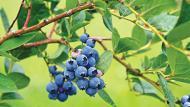
Pruning
Dormant pruning can be performed to maintain appropriate plant structure and size. Removal of approximately 25% of old canes should be done annually beginning when a plant is five to six years old, to promote the growth of new canes. Low branches, weak growth, and damaged wood can also be removed at this time. See UF EDIS publication HS1359, Pruning Southern Highbush Blueberry in Florida (https:// edis.ifas.ufl.edu/publication/HS1359).
Managed
Bees
Have honey bees (and bumble bees if applicable) delivered; should ideally be placed in the field after 10% bloom but before 20% bloom. On large farms, hives should be distributed throughout the farm to the extent it still allows access to bee providers. Confirm health of colonies upon delivery; at least 8 frames per hive should have adults, and at least 6 frames should have brood in the cells, with good activity into and out of the hives and on the bushes. Consider adding additional honey bee or bumble bee hives if there is a heavy, concentrated bloom across the farm, nearby competing crops or wild plants blooming at the same time, or ongoing poor weather conditions (cold, windy, or overcast). See additional details in EDIS Publication ENY-172, Pollination Best Practices in Southern Highbush Blueberry in Florida (https://edis.ifas.ufl. edu/publication/IN1237).
FEBRUARY Disease
Monitor for Botrytis and control as needed. Applications of fungicides prior to a forecasted need for overhead irrigation as freeze protection can help reduce Botrytis severity on plants damaged by low temperature injury. See UF EDIS Publication PP198, Botrytis Blossom Blight of Southern Highbush Blueberry (http://edis.ifas.ufl.edu/pdffiles/PP/PP11900.pdf). Apply suggested fungicides in rotation for control of anthracnose and/or Alternaria fruit rot at petal fall, 10-14 days after petal fall, 20-24 days after petal fall, and prior to harvest. One tool growers may consider in timing spray applications is the Blueberry Advisory System (BAS) at www.agroclimate. org/BAS, which indicates when weather conditions are favorable for the development of anthracnose fruit rot.
Insect Pests










Continue to monitor for blueberry gall midge and spray suggested insecticides when adults are observed. If traps are not used, spray before floral and vegetative bud break, with a second spray approximately 7-10 days after the first application, following label directions. See UF EDIS Publication ENY-997, Blueberry Gall Midge on Southern Highbush Blueberry in Florida (https://edis.ifas.ufl.edu/pdffiles/IN/IN123900.pdf). Also scout for flower thrips and blueberry bud mites, and if observed use applicable control measures. See UF EDIS Publication HS1156, 2022 Florida Blueberry Integrated Pest Management Guide (https://edis. ifas.ufl.edu/pdf%5CHS%5CHS380%5CHS380-Dnt92580jc.pdf) for detailed recommendations.
Weeds Apply post-emergence herbicide if weeds are at densities that hinder bush growth. See UF EDIS Publication HS90, Weed Management in Blueberry (http://edis.ifas.ufl.edu/pdffiles/WG/WG01600.pdf).
Freeze Protection Monitor forecasted and actual temperatures and utilize freeze protection strategies as needed. See UF EDIS publication HS968, Protecting Blueberries from Freezes in Florida (http://edis.ifas.ufl.edu/pdffiles/HS/ HS21600.pdf).
Managed Bees
Monitor the health of colonies and watch for appropriate levels of bee activity into and out of the hives and on the blueberry bushes. Consider adding additional hives if there is a heavy, concentrated bloom across the farm, competing crops or wild plants nearby blooming at the same time, or ongoing poor weather conditions (cold, windy, or overcast). See additional details in EDIS Publication ENY-172, Pollination Best Practices in Southern Highbush Blueberry in Florida (http://edis.ifas.ufl.edu/pdffiles/IN/IN123700.pdf).
36 | The Blueberry News FloridaBlueberryGrowers.org
Disease
MARCH

Monitor for Botrytis and control as needed. Applications of fungicides prior to a forecasted need for overhead irrigation as freeze protection can help reduce Botrytis severity on plants damaged by low temperature injury. See UF EDIS Publication PP198, Botrytis Blossom Blight of Southern Highbush Blueberry (http://edis.ifas.ufl.edu/pdffiles/PP/PP11900.pdf). Apply suggested fungicides in rotation for control of anthracnose and/or Alternaria fruit rot at petal fall, 10-14 days after petal fall, 20-24 days after petal fall, and prior to harvest. One tool growers may consider in timing spray applications is the Blueberry Advisory System (BAS) at www.agroclimate. org/BAS, which indicates when weather conditions are favorable for the development of anthracnose fruit rot.
Insect Pests










Continue to monitor for blueberry gall midge and spray suggested insecticides when adults are observed. See UF EDIS Publication ENY-997, Blueberry Gall Midge on Southern Highbush Blueberry in Florida (https://edis.ifas. ufl.edu/pdffiles/IN/IN123900.pdf). Also scout for flower thrips and blueberry bud mites, and if observed use applicable control measures. See UF EDIS Publication HS1156, 2022 Florida Blueberry Integrated Pest Management Guide (https://edis.ifas.ufl.edu/publication/HS380) for detailed recommendations.
Weeds
Apply a pre-emergence herbicide for warm season weeds (tank mix with a post-emergence herbicide if weeds are at a density that hinders bush growth). See UF EDIS Publication HS90, Weed Management in Blueberry (http:// edis.ifas.ufl.edu/pdffiles/WG/WG01600.pdf).
Freeze Protection
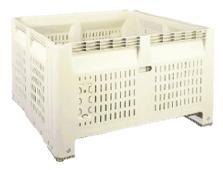
Managed Bees
Monitor forecasted and actual temperatures and utilize freeze protection strategies as needed. See UF EDIS publication HS968, Protecting Blueberries from Freezes in Florida (http://edis.ifas.ufl.edu/pdffiles/HS/HS21600. pdf).


Bee hives should be kept in the field through the end of bloom for all cultivars. See additional details in EDIS Publication ENY-172, Pollination Best Practices in Southern Highbush Blueberry in Florida (http:// edis.ifas.ufl.edu/pdffiles/IN/IN123700.pdf).

Plastic Rentals, Logistic & Management Solutions ■ Daily Bin Rental On-Demand — No Minimum Quantity or Timeframe ■ Citrus Bins, Blueberry Lugs, Peach Tote Rentals ■ Bin Repairs ■ Recycle Program Jerry Cummings 863-651-5596 jcummings@palogix.com www.palogix.com
USHBC Update
Council Launches
Several Initiatives to Advance the Blueberry Industry in 2023

As 2022 comes to a close, the U.S. Highbush Blueberry Council (USHBC) is preparing to launch a number of promotion programs to help ensure a successful 2023 for the blueberry industry!
The Blueberry Convention
Registration for The Blueberry Convention, Feb. 21-24 in San Diego, is now open!
You’ll want to be there as the blueberry industry gathers to collaborate, learn and connect around all the inspiring possibilities for blueberries.
Hear from inspiring keynotes, learn what’s new and what’s next for the industry, and participate in the first ever Grab a Boost of Blue Golf Tournament. Register today!
Elevated Retail Program for 2023
In 2023, USHBC’s Grab A Boost Of Blue® campaign will be elevated to a fully integrated branded consumer, retail, and noncommercial foodservice campaign. Based on recent consumer research, the Grab A Boost Of Blue® brand is really resonating.
Last summer’s Consumer Usage & Attitude Study positioned the Grab A Boost Of Blue® brand in front of 1,500 consumers who found the brand logo 77%-88% “highly relevant” to them and 73%-86% “inspiring,” respectively. Encouraged by this response and to build on recent success, USHBC plans to further invest in Grab A Boost Of Blue® messaging and promotion, and continue to grow the number of Grab A Boost Of Blue® licensees.
2023 power periods
To help encourage industry engagement and alignment of marketing efforts, the 2023 USHBC retail program will focus on “power periods” – focused time periods with specific blueberry messages that retailers and their dietitians can leverage with their clients.
In the new year, all power periods will include impressive national partners that will be highly engaged and invited to join our growing “Super Fan” base. Collaborations include:
• A Healthy Heart Month partnership with the American Heart Association, and a May 18 walk in New York

• A “Boost Your Workout” partnership with Lifetime Fitness in March and April
• A Gut Health Month partnership with WebMed’s Medscape Health Professional platform in May

• A recipe contest featuring celebrity judges for National Blueberry Month in July

• A back-to-school promotion targeting households with young families
• A holiday promotion with Hallmark
Retail activations
At retail, USHBC will be expanding on last summer’s seven successful retailer activations (Harp’s, Arizona; Weis, New Jersey; Food City, Tennessee; United, Texas; Albertsons/Safeway, Oregon; Rouses, Louisiana; and SpartanNash, Michigan) to 25 retailers in 2023.
The outcome and strength of the Grab A Boost Of Blue® call to action was clearly evident thanks to in-store, pointof-sale signage, printed and online store weekly circulars, retailer e-commerce and in-store radio messaging (in one case), which lifted sales volume significantly as compared to retailers that didn’t participate in the promotions. Average sales units for participating retailers were up 12.5 points over nonparticipating retailers.
And, when participating retailers implemented a display contest in conjunction with print and online advertising (five retailers executed contests), the point spread of average units sales jumped to 25.8 points.
Rouses Circular Rouses Instore

Ironman Poster SpartanNash Circular
For frozen, USHBC will be piloting a blueberry promotion with six retailers for the first time ever in 2023.
38 | The Blueberry News FloridaBlueberryGrowers.org
Are You Licensed?
Blueberry varieties developed by the University of Florida are patent protected under U.S. Code Title 35. Anyone propagating plants for their own use or for sale is required to be licensed by Florida Foundation Seed Producers, Inc. (FFSP). Additionally, packers, marketers, and sellers of fruit from the above varieties can be liable for selling fruit from illegally propagated plants. As of Sept 30, 2022, the above entities are the only entities licensed for legal propagation and sale of plants of the respective varieties. Protect yourself from unknowingly purchasing illegal plants or fruit by asking entities if they are licensed to propagate and if fruit has come from legal plants. Illegal propagation is a direct threat to the blueberry industry and the patent rights held by FFSP. Royalties generated are critical to the support of the Florida blueberry breeding program. If you are interested in obtaining a license or would like to anonymously report illegal propagation, please contact: FFSP, 3760 NW 83rd St, Suite 2, Gainesville FL 32606, Phone: (850)-594-4721 ext. 108. You can also visit http://ffsp.net to learn more about licensing oppportunities.

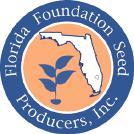
FloridaBlueberryGrowers.org The Blueberry News | 39
x = Licensed for USA
x¹ = Licensed for USA (excluding AZ, CA, OR, and WA)
KPHITE® 7LP & Sizer XL work systemically throughout the plant, delivering vital disease protection and nutrients right where the plant needs it. KPHITE® 7LP brings its EPA registered disease protection from its unique, proven fungicide bactericide molecule Sizer® XL provides totally soluble Phosphate and Potassium to encourage consistent fruit set and superior production.
KPHITE® 7LP and Sizer® XL are trusted by growers and proven through independent trials
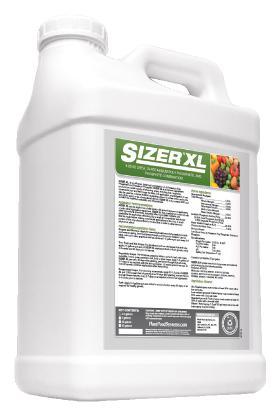


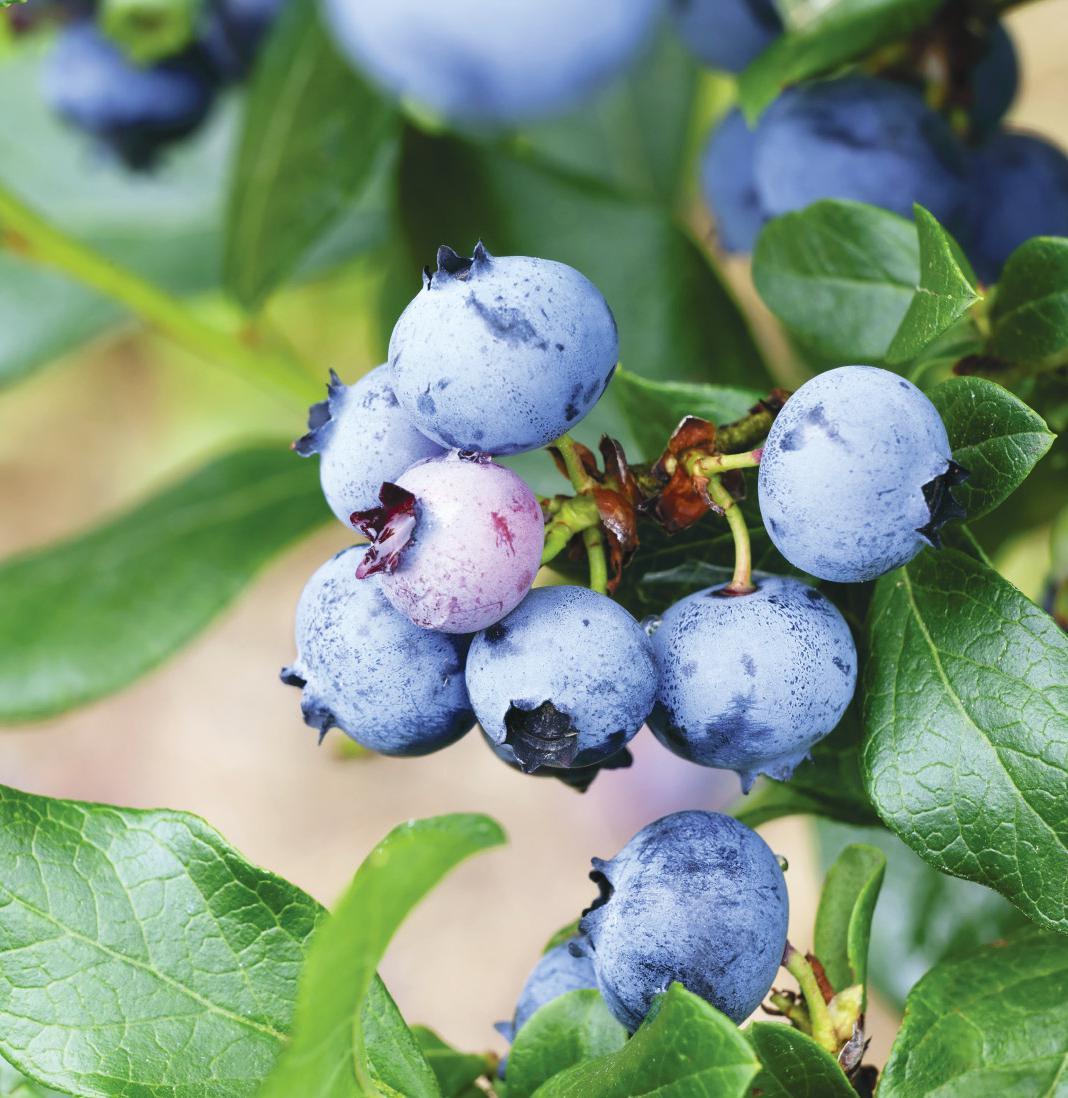
40 | The Blueberry News FloridaBlueberryGrowers.org THE SYSTEMIC COMBINATION FOR A S U P ERIOR B LUEBER R Y CR O P 800 -343 -77 75 • P.O. B OX 7 75 • ZEL LWOO D, FL 3 2798 • PlantFoodSystems com K-PHITE ® 7LP and Sizer® XL are registered trademarks of Plant Food Systems, Inc &


























































 Leonard Park President
Leonard Park President



























































































































